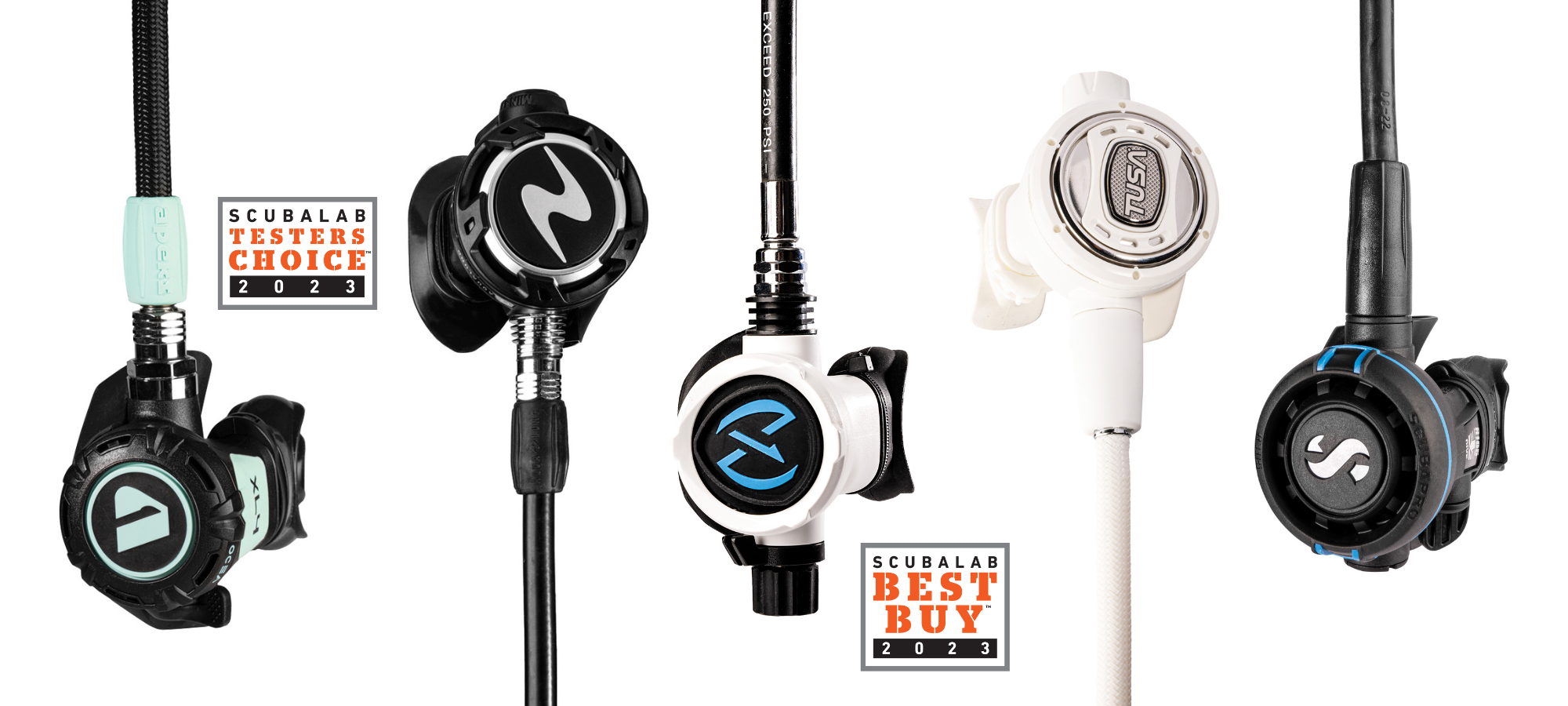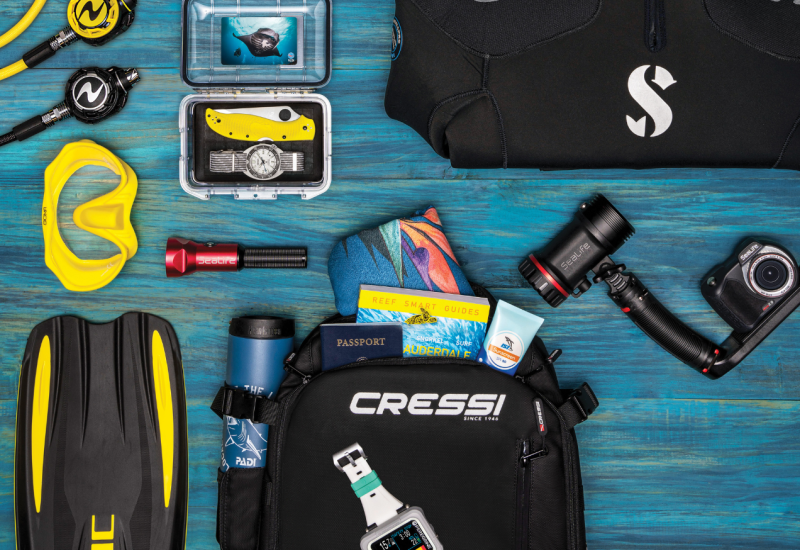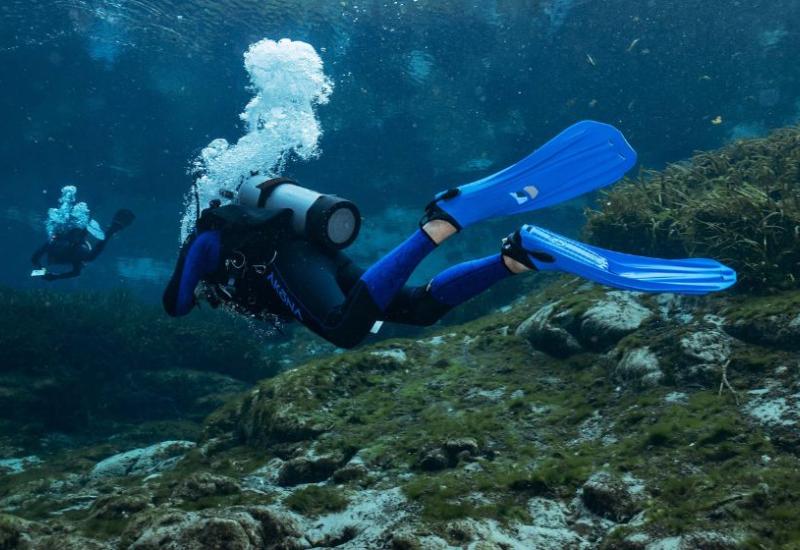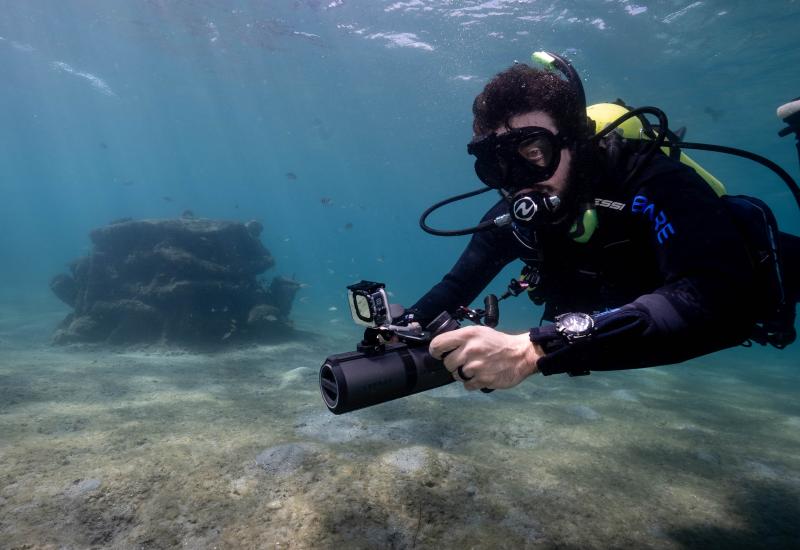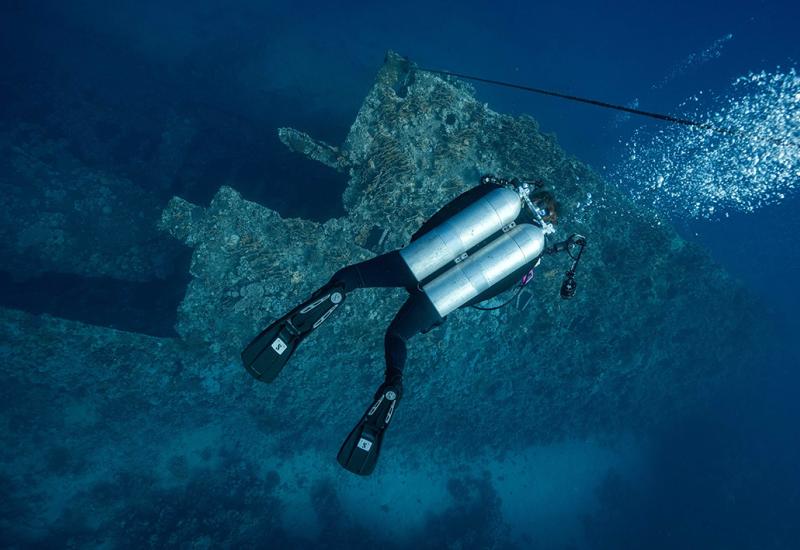The Best Scuba Regulators of 2023 Reviewed
Head-To-Head Testing
How We Test
Jump to results | Download complete test results here
Objective testing was conducted on an ANSTI wet breathing simulator that measures effort (“work of breathing”) required to move air through a reg as it is subjected to a series of depths and breathing rates. The testing was done at Dive Lab, a commercial testing facility in Panama City Beach, Florida.
Tests are performed at an HP supply pressure of 750 psi (+/- 25 psi). Regs are tested in the face-forward position, and those with breathing adjustments are set at the wide-open/no free- flow point.
The simulator pressurizes the chamber to simulate depths of 132 feet of seawater, 165 fsw and 198 fsw. Each “breath” of the machine moves a specified amount of air, called the tidal volume, through the reg. We do this at 2 liters/20 breaths per minute, 2.5 L/25 bpm and 3 L/25 bpm. Multiplying the tidal volume by the breathing rate gives you the respiratory minute volume (RMV).
Why Do We Test At These Depths And Breathing Volumes?
40 RMV at 132 fsw: This represents 20 breaths per minute times a 2-liter volume. This is pretty much the maximum recreational depth at a somewhat aggressive breathing rate.
62.5 RMV at 165 fsw: This rate represents the European conformance standard EN250. This is also the depth and breathing rate commonly used by manufacturers when determining a reg’s performance. This is the U.S. Navy’s Class A test depth and breathing rate.
75 RMV at 132 fsw or deeper: This simulates the potential demand at maximum recreational depth for a diver at an extremely heavy work rate.
The breathing simulator monitors how much effort is required to “breathe” in and out, measuring the work of breathing in joules per liter ( j/L). As depth and breathing rate increase (and with it, the density of the air being moved), the work gets harder. Many modern regs are able to perform at 40 RMV at 132 fsw with less than 1 j/L of work.
If a reg doesn’t exceed the test parameters in our standard tests— the toughest of which a human diver would be hard-pressed to keep up for more than a couple of minutes—we push it to more extreme conditions. Regs aren’t tested for a pass/ fail grade but to objectively gauge their performance in carefully controlled conditions. You can see how each reg performed on the simulator in the charts that accompany each review.
Ergonomic testing was conducted at Alexander Springs in central Florida by a team of divers who evaluated each reg in the following categories, assigning a score from 5 (excellent) to 1 (poor), and recording observations and comments about performance.
Ease of breathing: How well does the reg deliver air when you are propelling yourself forward in a standard swimming position? Face-up position? Head-down position?
Wetness: During normal swimming, how dry does the reg breathe? Face-up position? Head-down position?
Bubble interference: How well does the reg deflect bubbles from your field of view?
Ease of clearing: How difficult is it to clear the reg by exhalation or using the purge?
Purge stiffness: Is it soft and progressive or forceful and abrupt?
Resistance to free-flow: Is the Venturi control easy to use and effective at blocking free-flows?
Breathing Adjustment: Is the adjustment easy to find and use? Is it effective?
Comfort of second stage: Overall comfort, taking into account its size, shape and weight.
Noise: Does the reg operate with excessive noise?
Q: How can I make my reg more comfortable?
A: Fortunately, regulator mouthpieces are very easy to remove and replace. If your regulator mouthpiece is too long or too short, or otherwise less than ideal, you can easily swap it out for a preferred style. If you struggle with jaw fatigue while diving, you may also want to consider a SeaCure or similar moldable mouthpiece that can be customized for a perfect fit. If your second stage pulls uncomfortably, you can try using a longer hose or install a swivel adapter to give yourself some relief.
REGULATORS
APEKS
XL4 Ocea
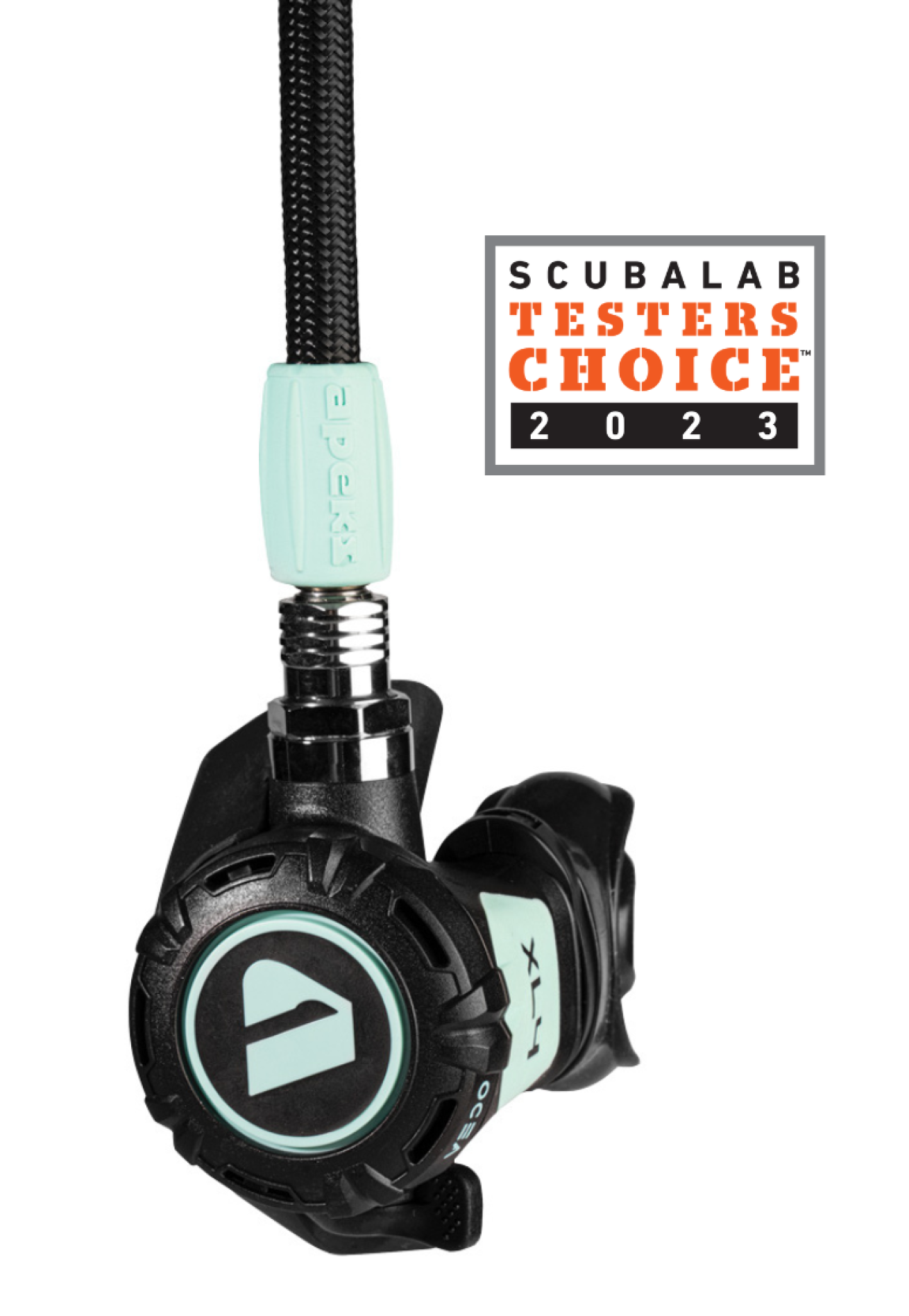
Monica MedinaMSRP $729
Contact apeksdiving.com
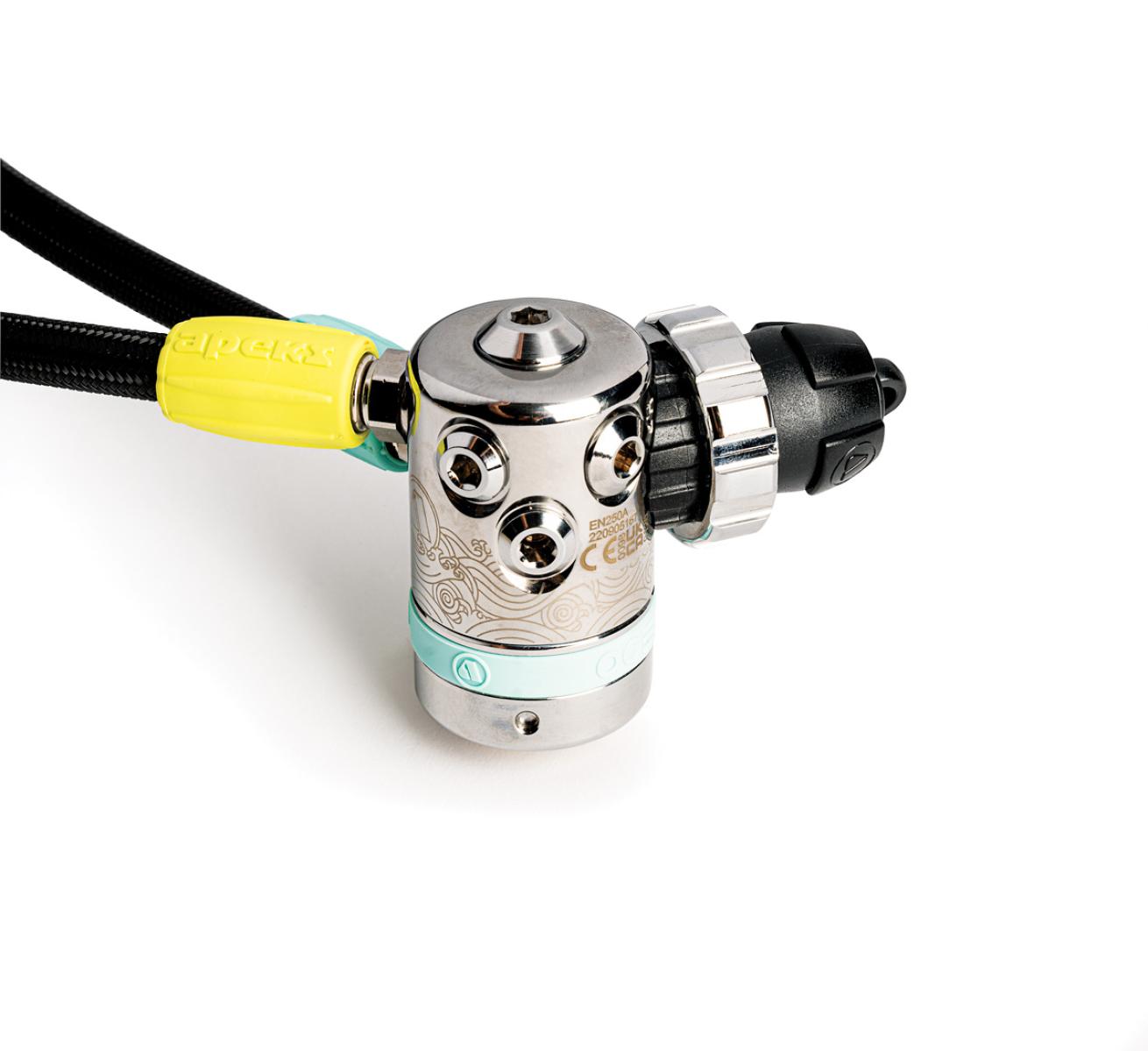
Monica MedinaApeks XL4 Ocea first stage
Based on the XL4+, this reg has been redesigned to be as environmentally conscious as possible. The design incorporates recycled plastic waste and plant-based bioplastic, and manufacturing uses solar power and other eco-friendly processes. Laudable goals, but what about performance? In our objective test, the Ocea consistently delivered great work of breathing scores regardless of depth or work rate, and had some of the best work of breathing scores in the test.
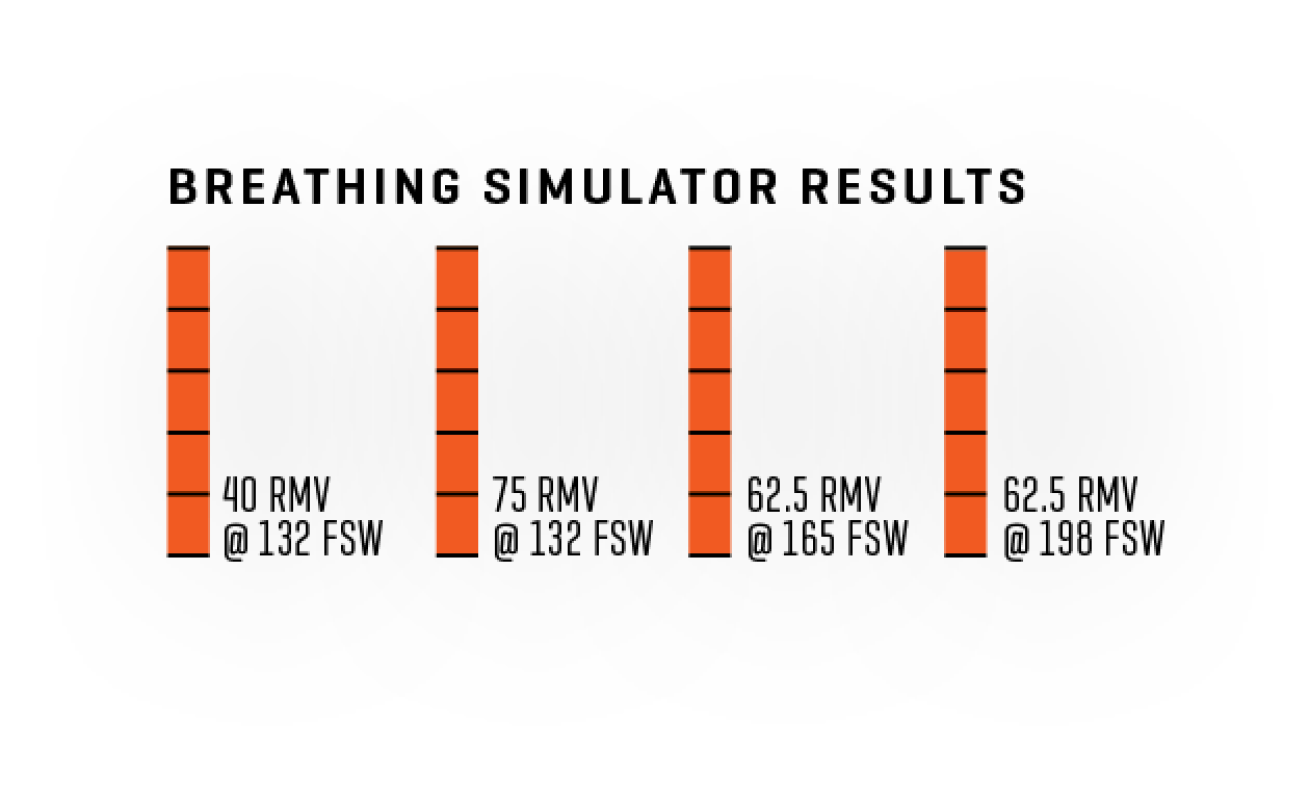
Scuba Diving StaffApeks XL4 Ocea Breathing Simulator Results
In the water, test divers reported very easy and dry breathing in all positions. The lightweight, compact second stage was a favorite among testers. “Nice and light in mouth, super comfortable,” one tester said. The tiny reg clears almost immediately, but the purge needs to be pushed in a little further than one might expect before activating. The purge has a consistent fl ow rate, even when pressed fully. “Subdued and controlled stream,” is how one tester described it. The reg is very resistant to free-flow, regardless of the Venturi control. A favorite of testers, with great performance across the board, the XL4 Ocea is our Testers Choice.
AQUALUNG
Helix Pro
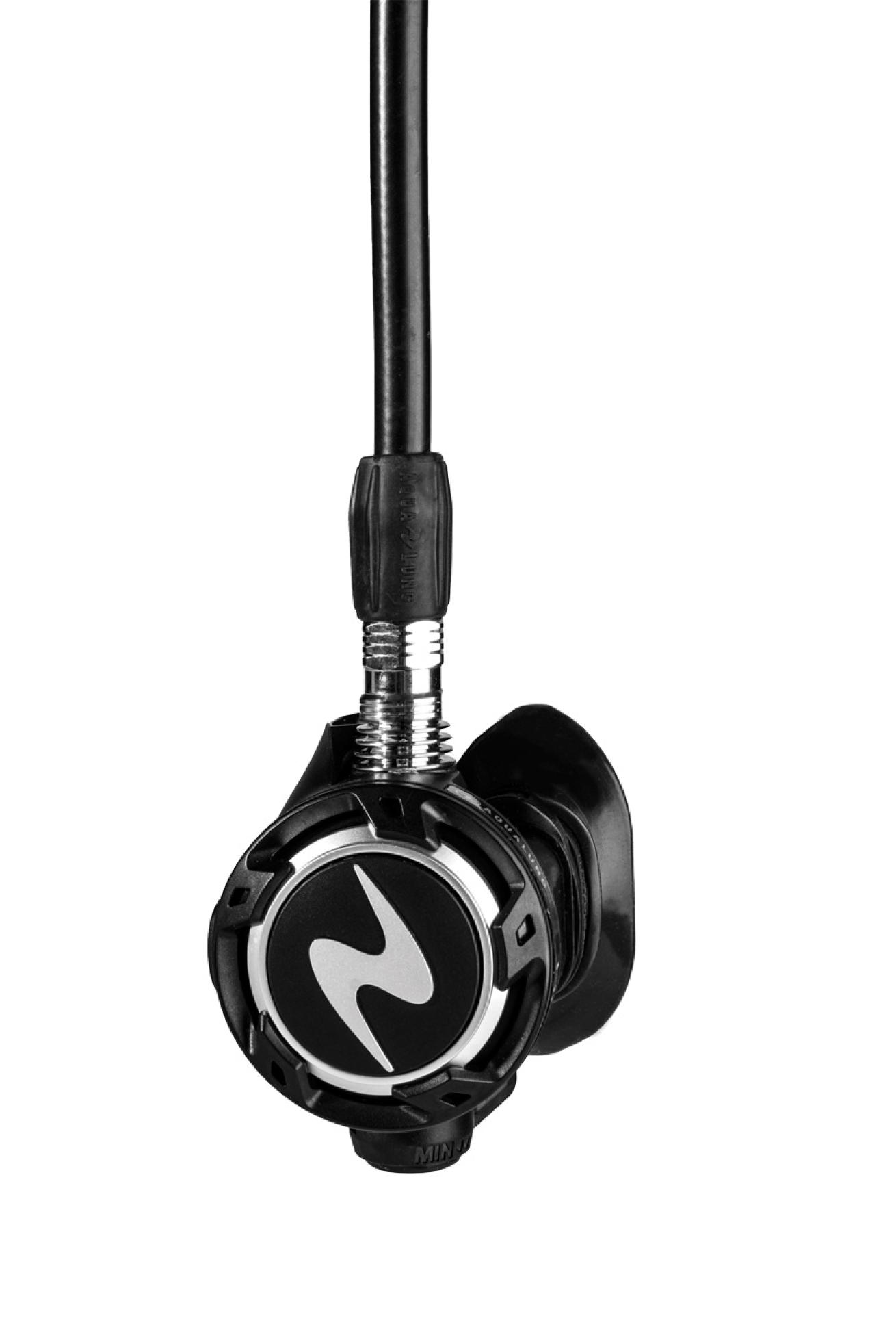
Monica MedinaMSRP $605
Contact aqualung.com
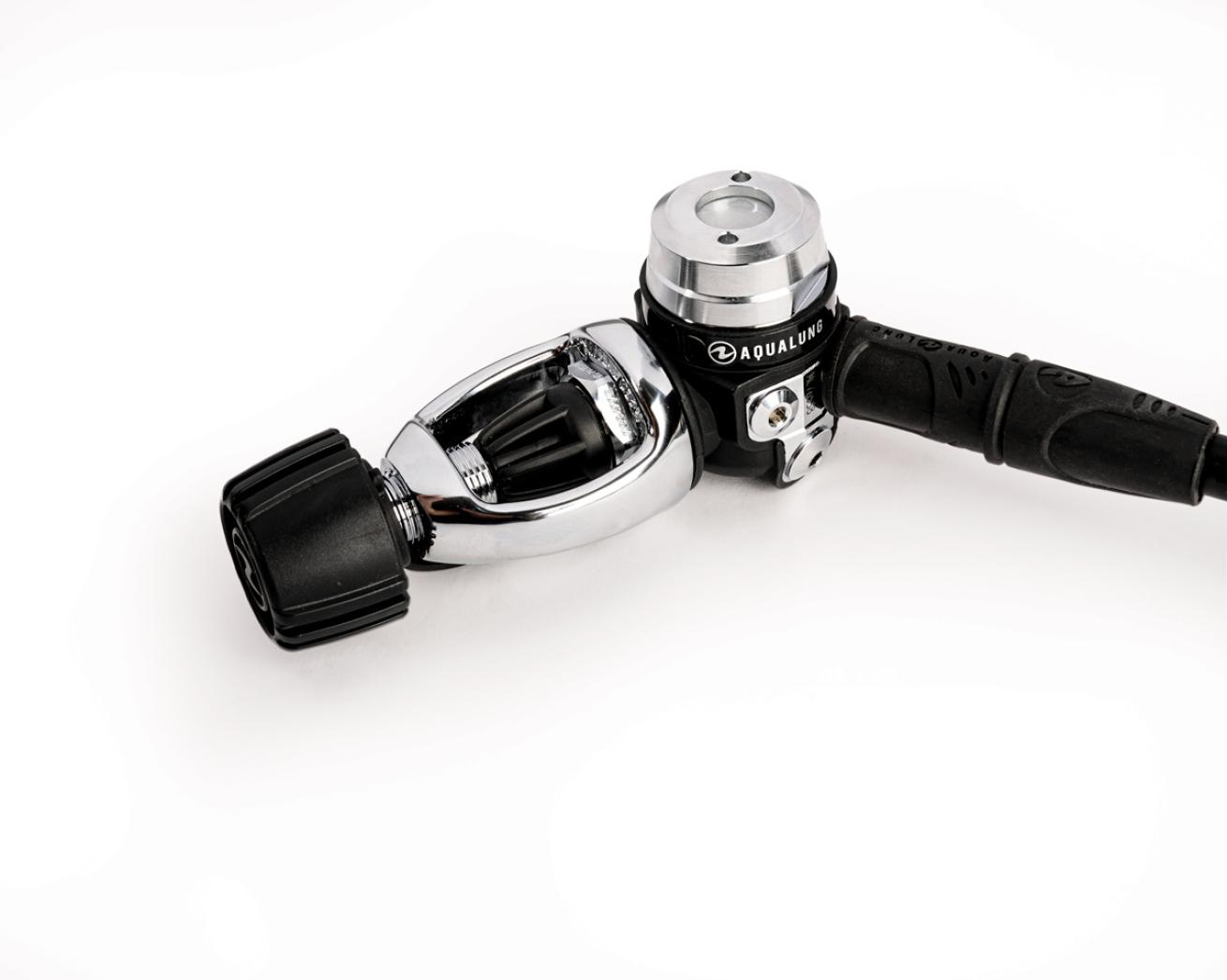
Monica MedinaAqualung Helix Pro first stage
This reg earned excellent breathing scores on the simulator at low and medium-high work rates. When pushed to extreme depths or heavy work rates, work of breathing remained good and very good overall. In the water, test divers praised the reg with comments such as “fantastic super-smooth, low-effort gas delivery.” It took very good scores in the water for ease and dryness of breathing in all positions.
The reg is eager to free-flow, but eruptions are generally mild and quickly quelled. The Venturi is effective at minimizing free-flows at the surface and scored very good for ergonomics. Clearing the reg, either manually or via the purge, is very easy. The powerful purge requires a purposeful press to activate, but divers appreciated the responsiveness and control that it offered. “Goes from blasting to super blasting,” one tester quipped. The second stage scored very good for comfort and bubble interference. The first stage uses T-shaped port arrangements and has an auto-closure device. This reg offers solid performance and was a favorite of several test divers.
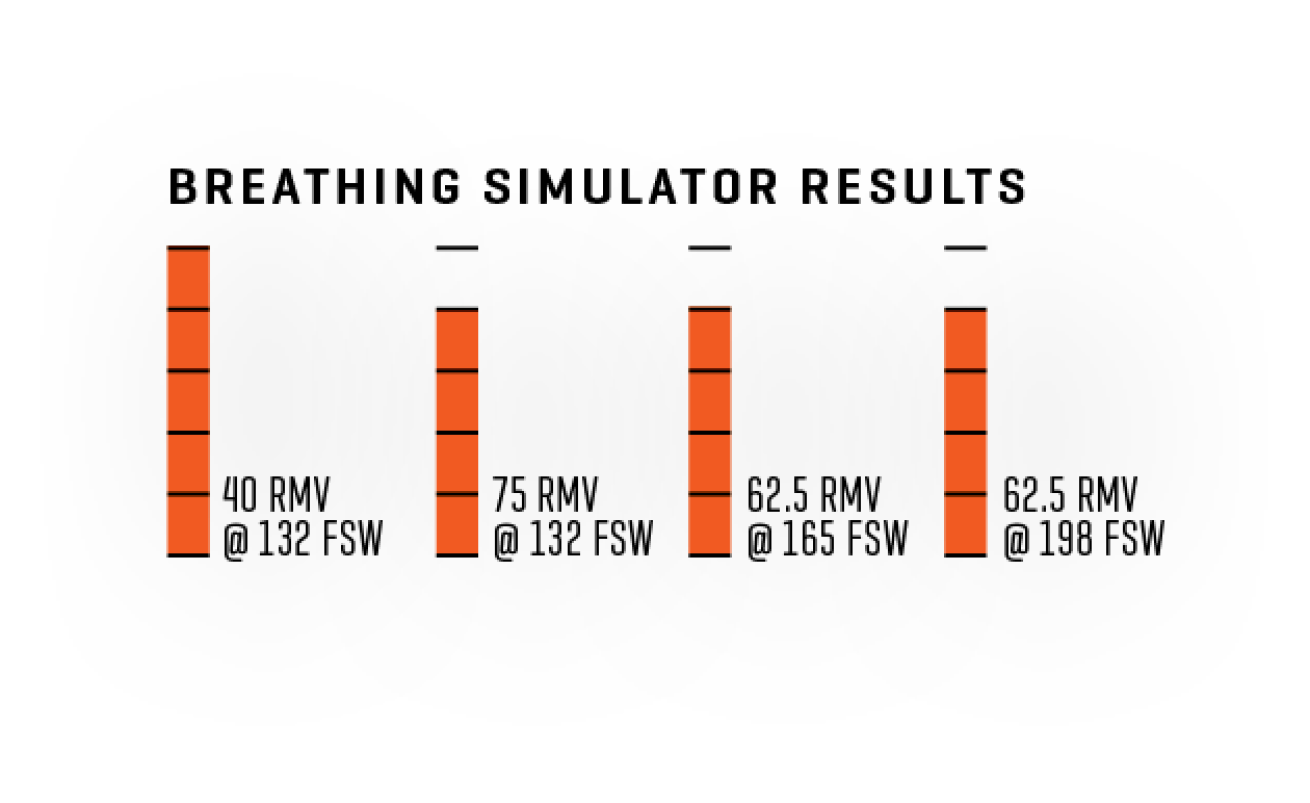
Scuba Diving StaffAqualung Helix Pro Breathing Simulator Results
NEX
Maya With 2-Inch Second Stage
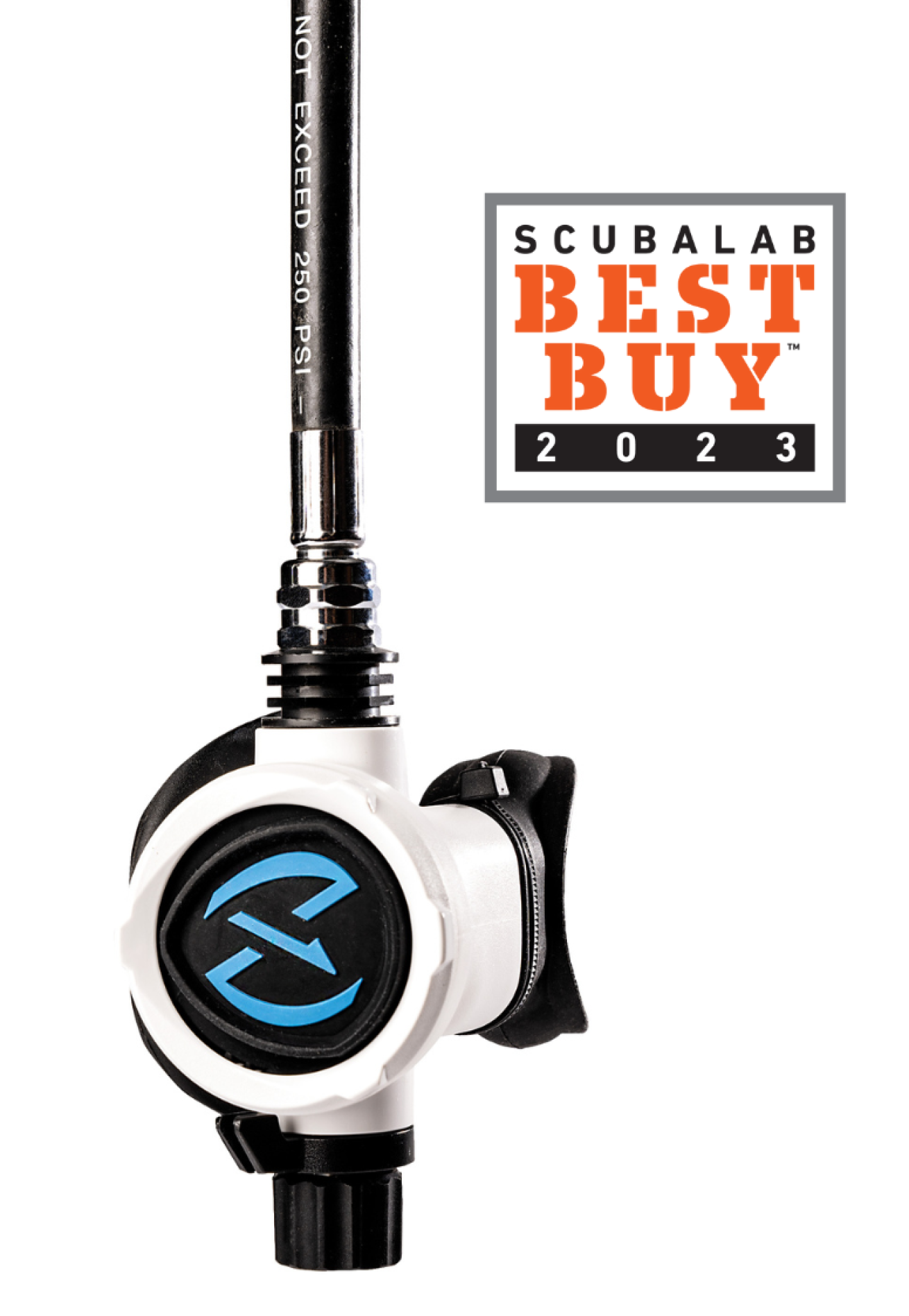
Monica MedinaMSRP $539.98
Contact nexdive.com
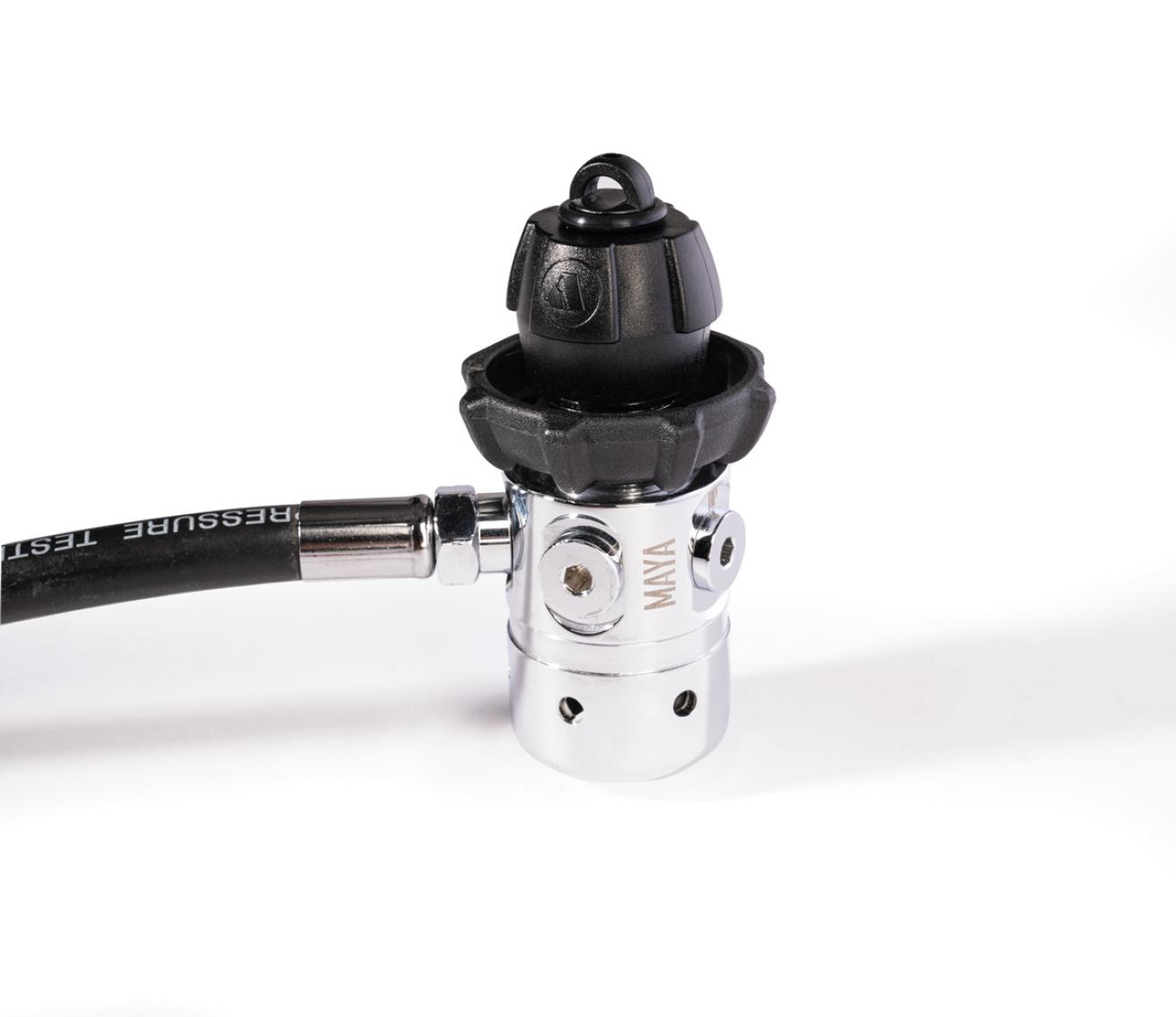
Monica MedinaNex Maya first stage regulator
Combining a super-compact first stage with an equally small, lightweight second stage, this reg earned the top score for comfort. “Like I’m not using a reg. Only feel the mouthpiece,” one tester said. The second stage scored good for bubble interference, despite its size. It earned excellent work of breathing scores at low work rates, and very good scores at moderate to heavy work rates.
“Nice, smooth and quiet” and “very easy breathing” were ways testers described the reg’s performance. It scored good for ease of breathing face-up but otherwise scored very good for ease and dryness of breathing in all positions. The ergonomic breathing control has a noticeable effect and a good range of adjustment. The Venturi, situated on the front of the reg, was a bit harder to access, but very effective. The small reg clears readily, and testers scored the supple, responsive purge excellent for stiffness. This compact, lightweight breather packs comfort, convenience and performance into a travel-friendly package. A favorite of test divers, the Maya is our Best Buy.
Read More: Nex Maya Scuba Regulator: ScubaLab Best Buy
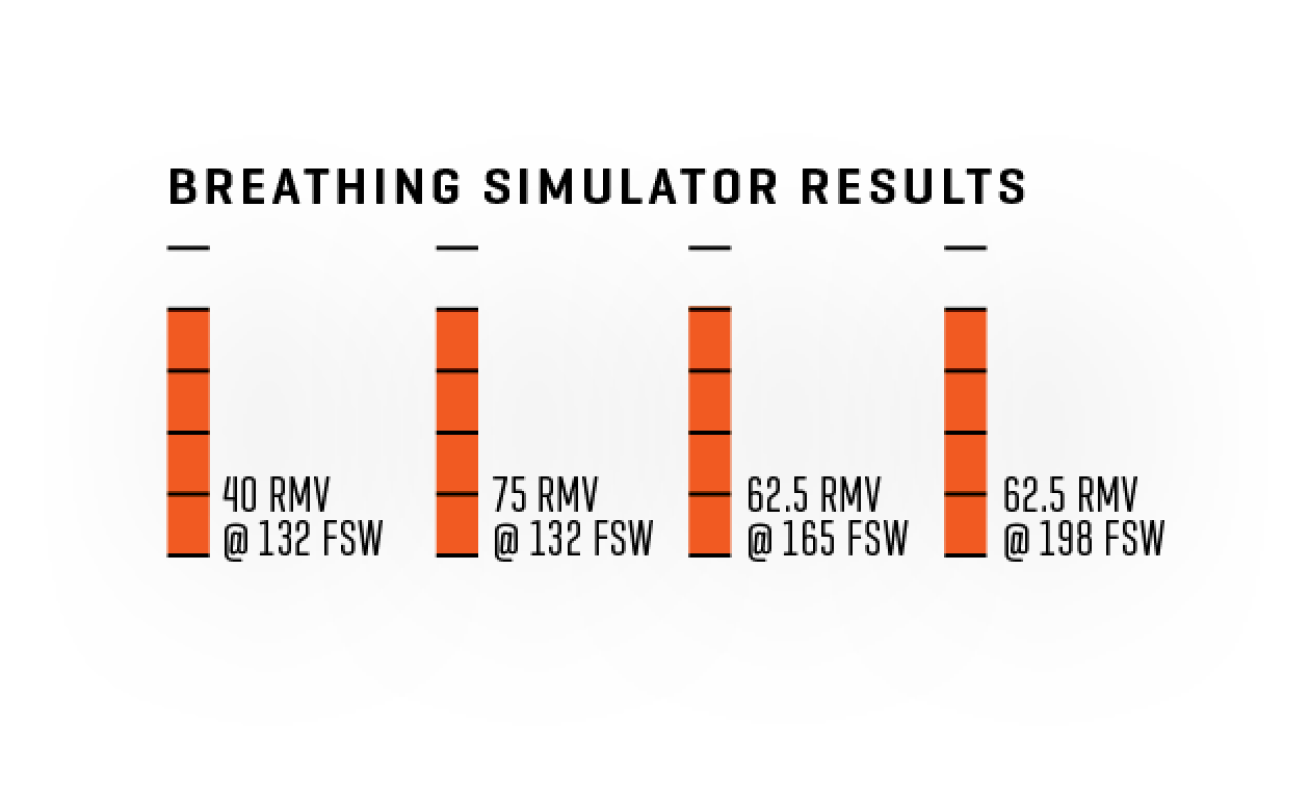
Scuba Diving StaffNex Maya With 2-Inch Second Stage Breathing Simulator Results
NEX
Monterey Fifth Port With 2.5 - Inch Second Stage
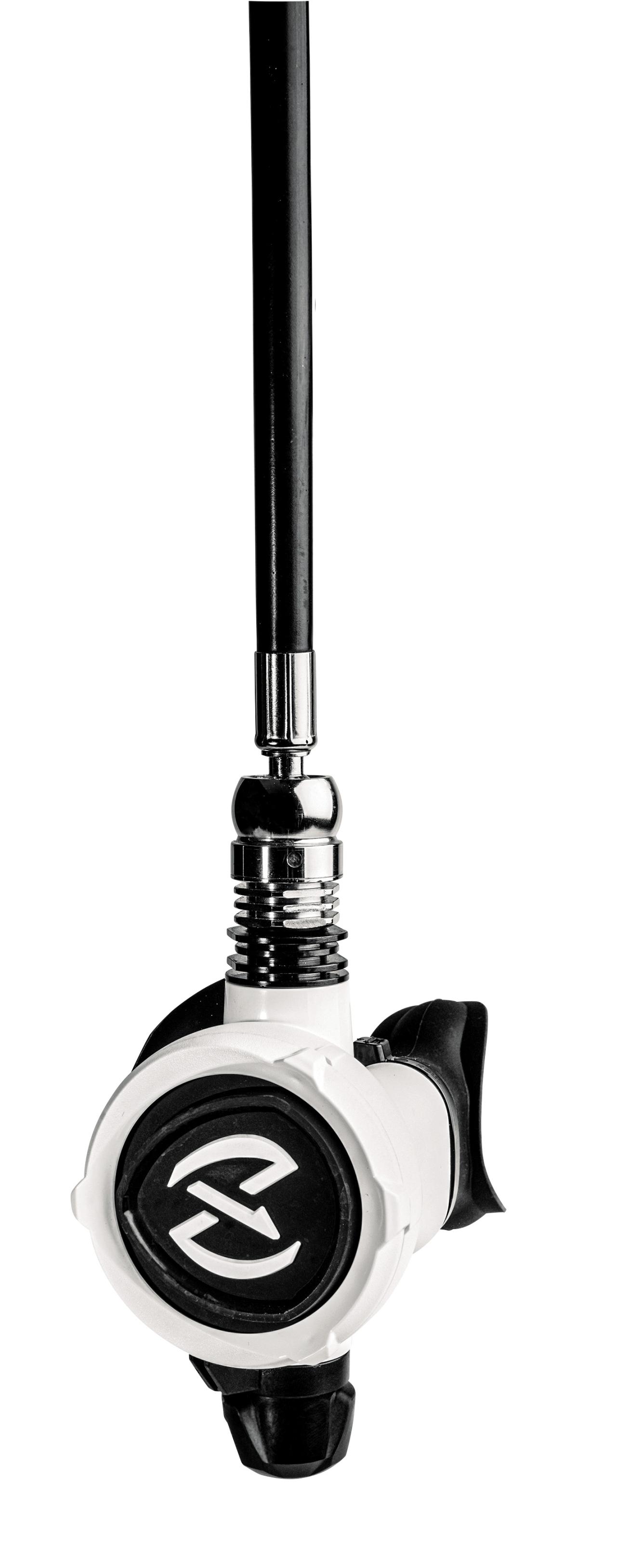
Monica MedinaMSRP $1059.95
Contact nexdive.com
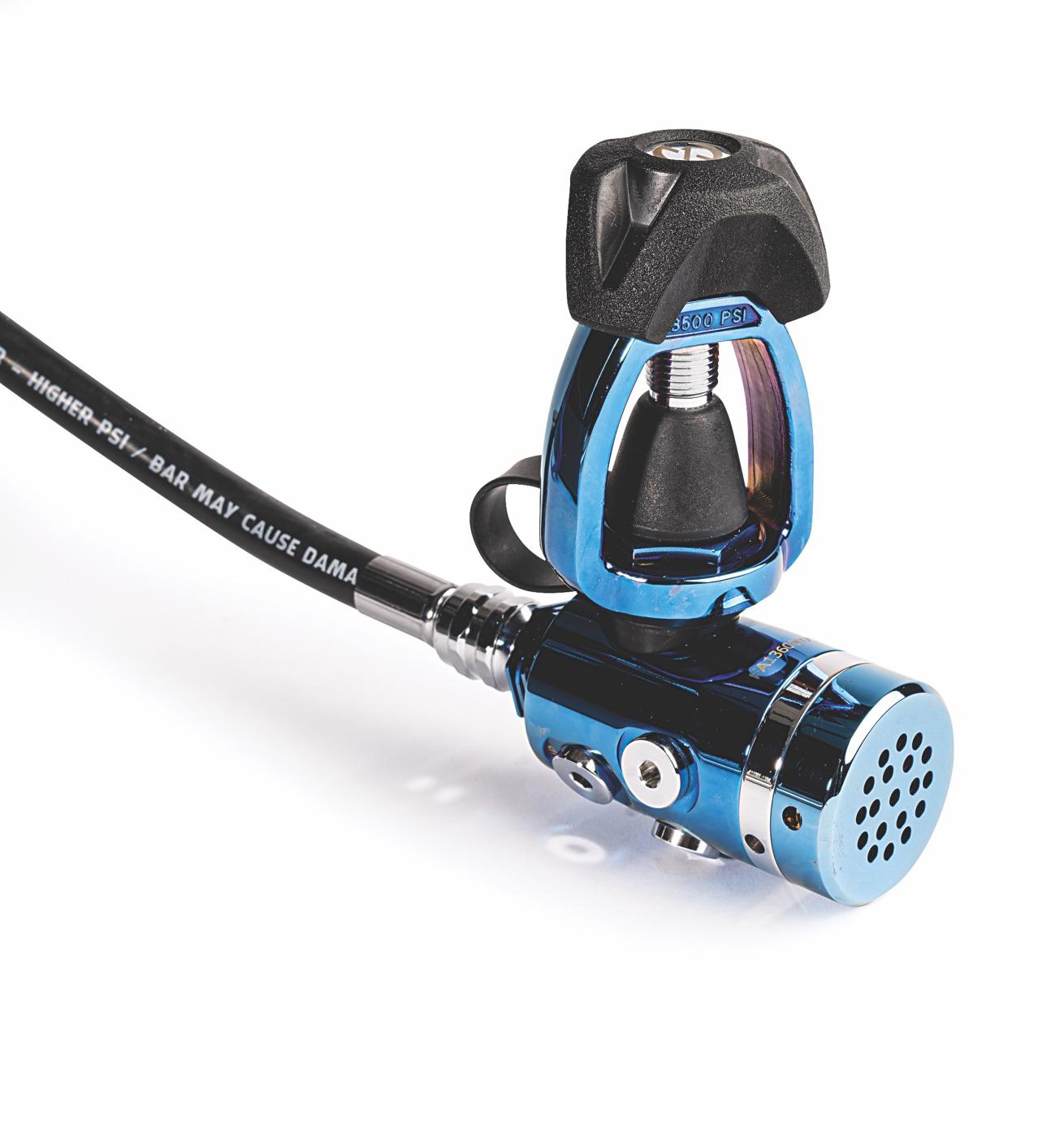
Monica MedinaNex Monterey Fifth Port first stage
This reg pairs the modular Monterey first stage, outfitted with a fifth low-pressure port and an overbalanced environmental seal, with a 2.5-inch-diameter balanced second stage. The combo was rated very good for ease of breathing by testers and took top scores for dryness of breathing in all positions. On the simulator, it tracked right around the average and earned excellent scores at low to medium work rates regardless of depth. The second stage scored very good for comfort, ease of clearing and bubble interference—although some testers did fi nd the reg a little noisy. The grippy, tactile breathing adjustment has a noticeable effect on inhalation effort and a large range of adjustment. With the adjustment cranked down the reg won’t so much as bubble, but if you’ve got it wide-open even the Venturi switch will only do so much. The supple purge is responsive, with very good control. The Monterey system offers flexibility through its modular components, solid breathing performance, and ergonomic controls.
Related Reading: Nex Monterey Scuba Regulator: ScubaLab Testers Choice
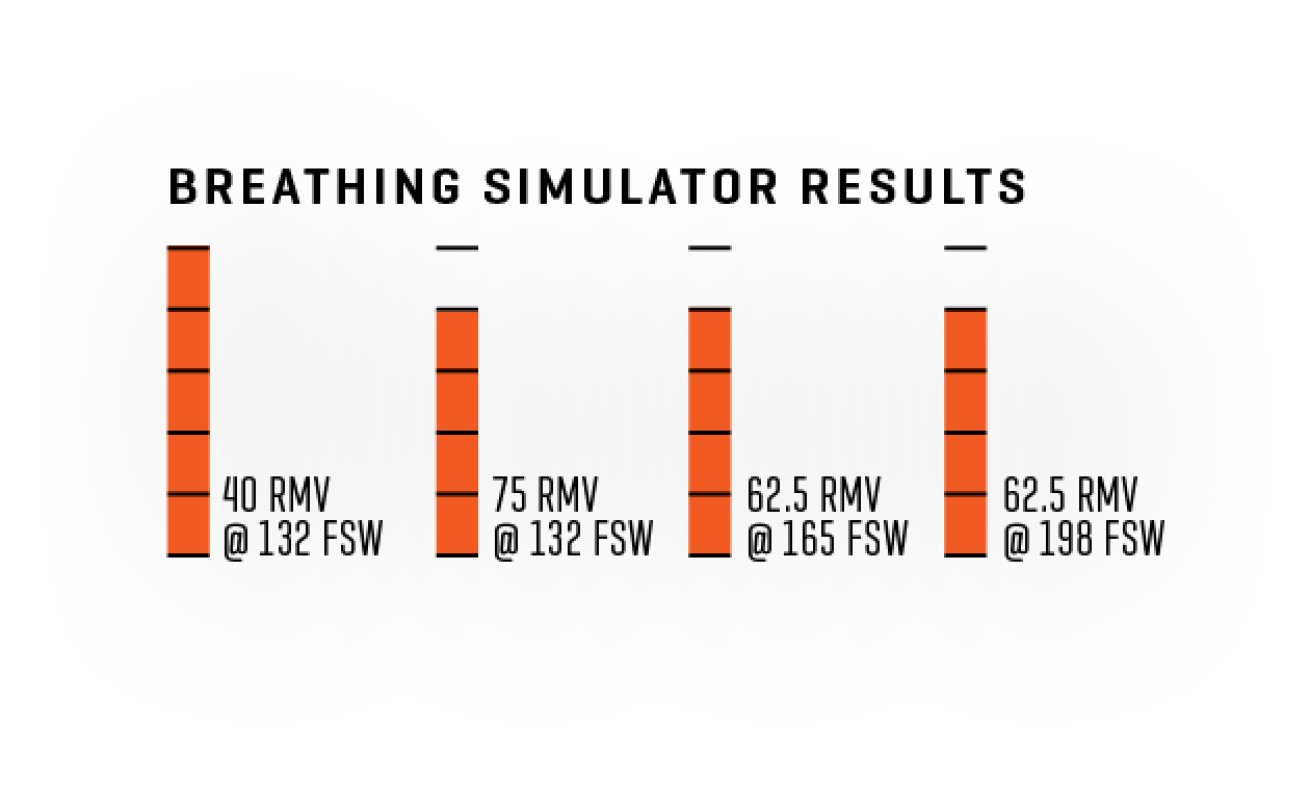
Scuba Diving StaffNex Monterey Fifth Port With 2.5 - Inch Second Stage Breathing Simulator Results
SEAC
PX100
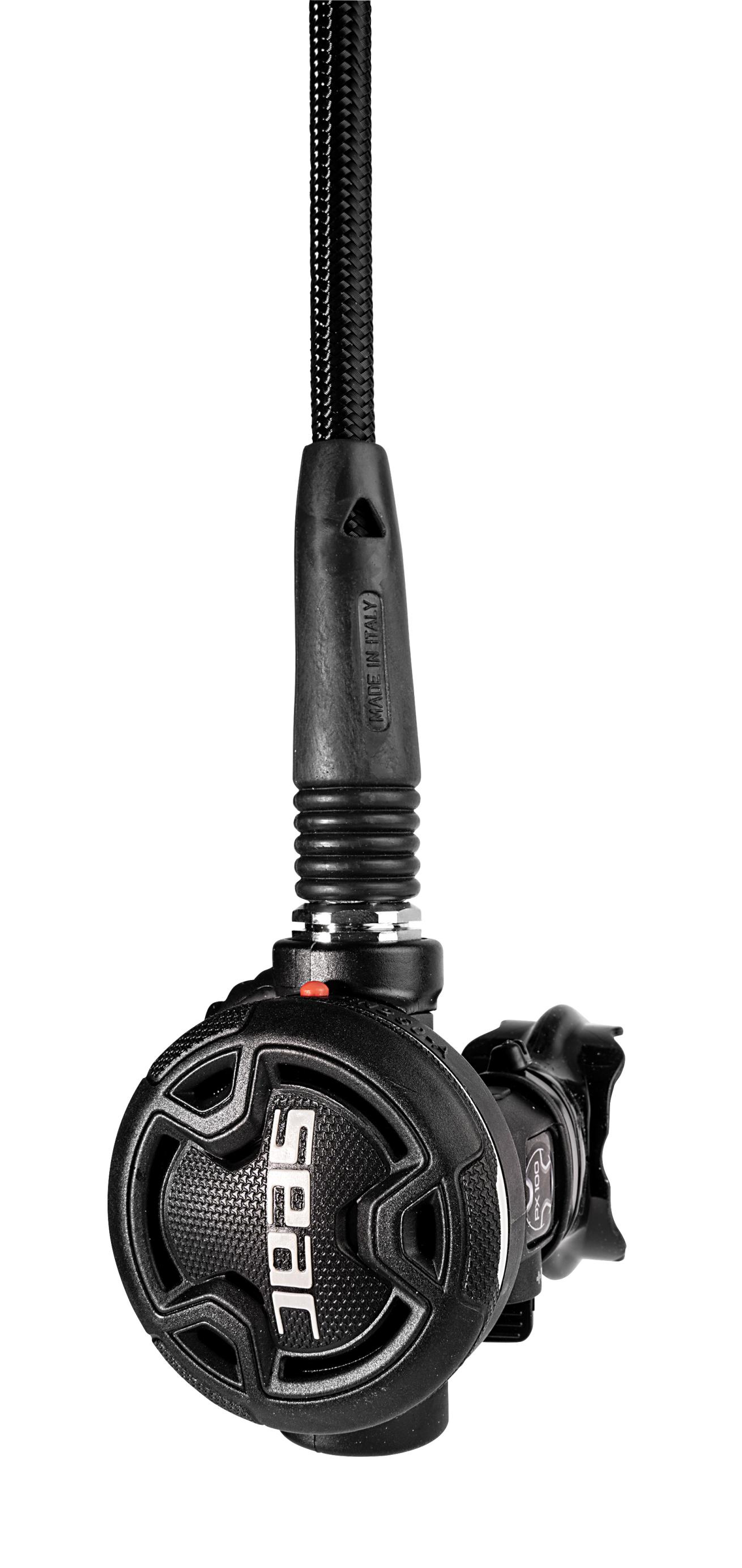
Monica MedinaMSRP $279
Contact seacsub.com
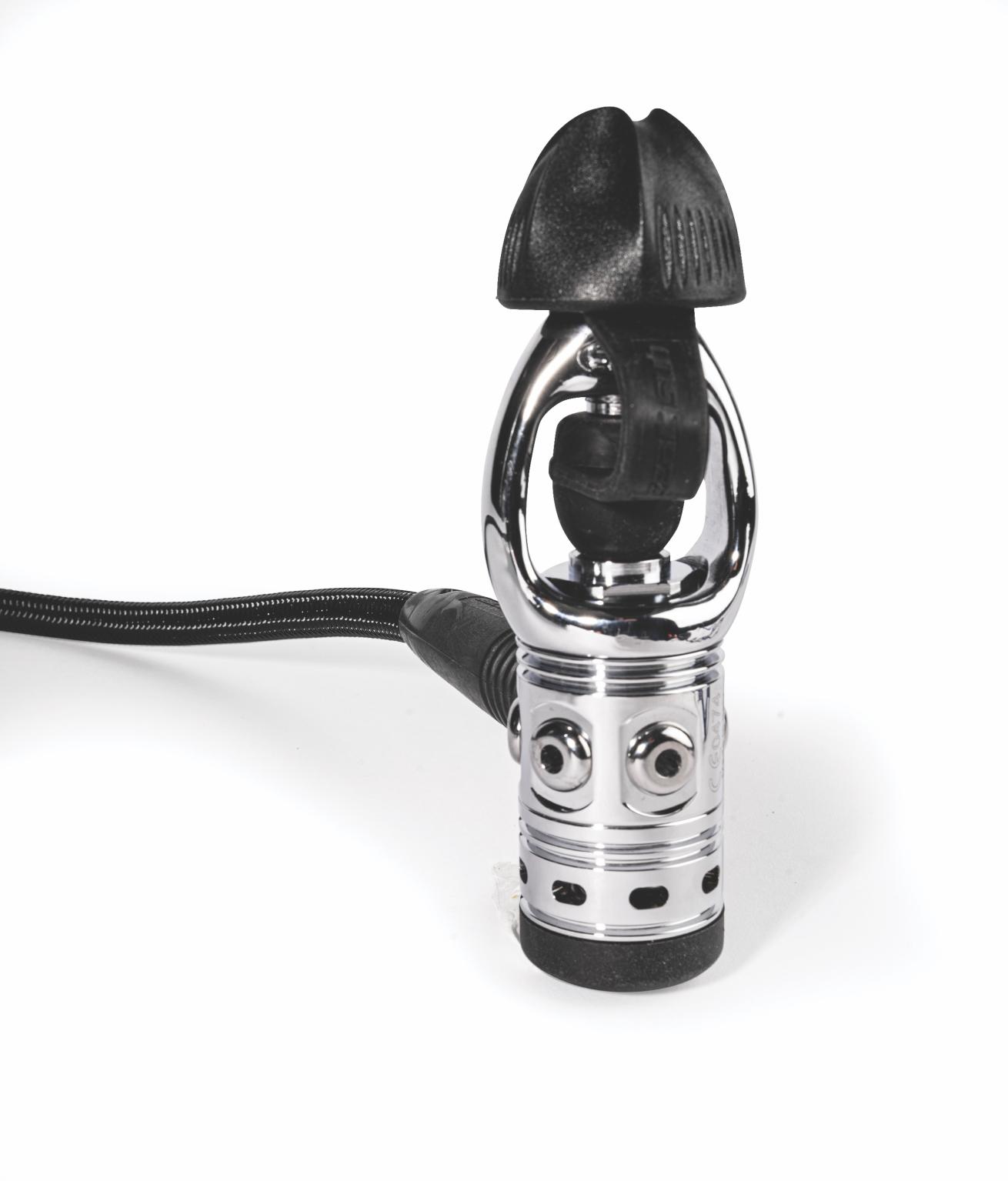
Monica MedinaSeac PX100 first stage
This reg scored very good and good scores on the breathing simulator. Breathing effort was very consistent and only increased ever so slightly between 132 and 165 fsw. Test divers praised it for its “quiet and easy breathing,” as multiple testers described it. It scored very good for ease and dryness of breathing in all positions. The teeny-tiny Venturi effectively moderated and even stopped free-fl ow at the surface and depth. Testers were less than thrilled at its Lilliputian ergonomics, scoring it good overall. The reg scored excellent for ease of clearing. The purge valve is a bit stiff, but very responsive, with the fl ow rate correlating very closely to the amount of pressure applied to the mechanism. The large-diameter diaphragm and cover make it easy to fi nd and activate. The second stage scored very good for comfort and bubble interference. The piston first stage features one high-pressure port and four low-pressure ports. The PX100 is simple and reliable, with solid performance overall. “Would be perfectly happy with this as a beginner or rental reg,” one tester commented.
Related Reading: The Best Scuba Gear for Dive Travel
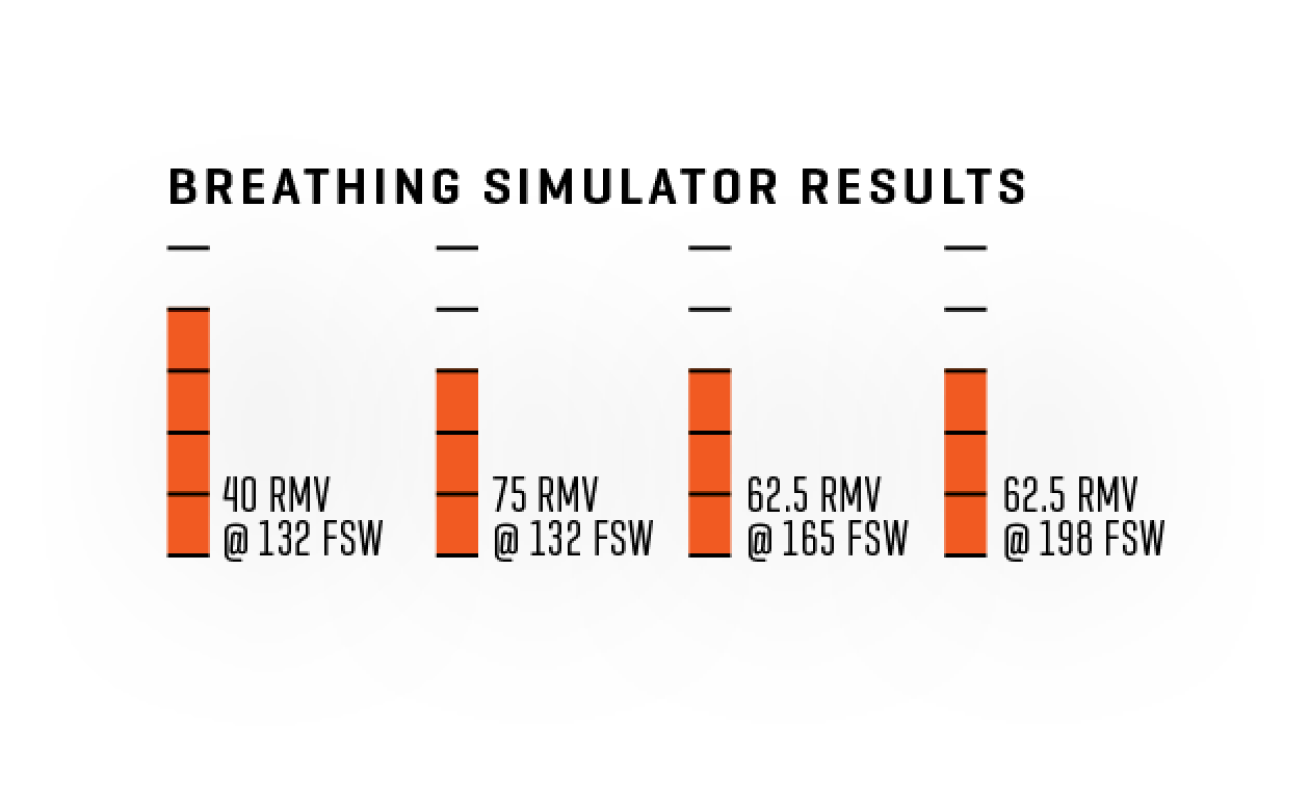
Scuba Diving StaffSeac PX100 Breathing Simulator Results
SCUBAPRO
MK2 EVO/R105
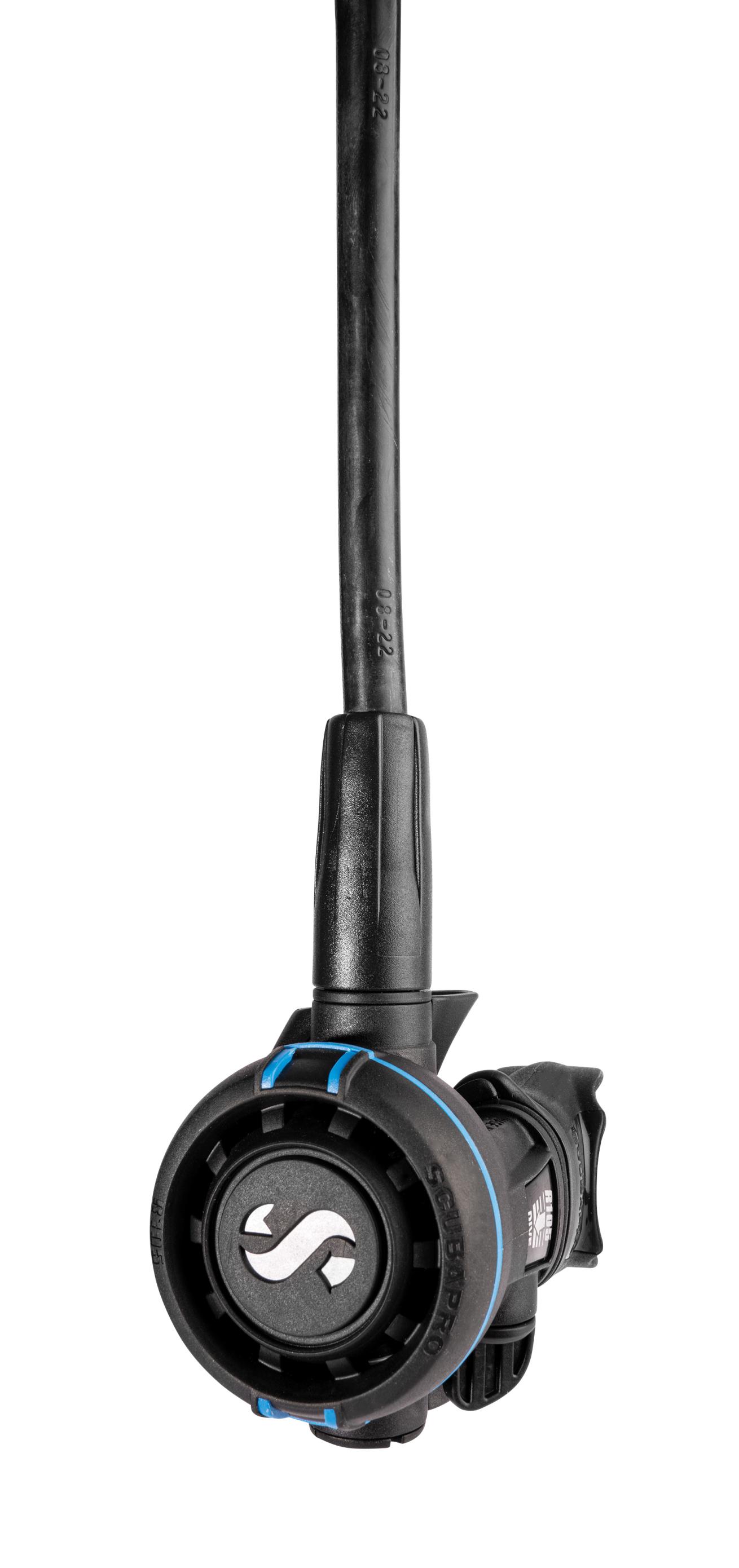
Monica MedinaMSRP $519
Contact scubapro.com
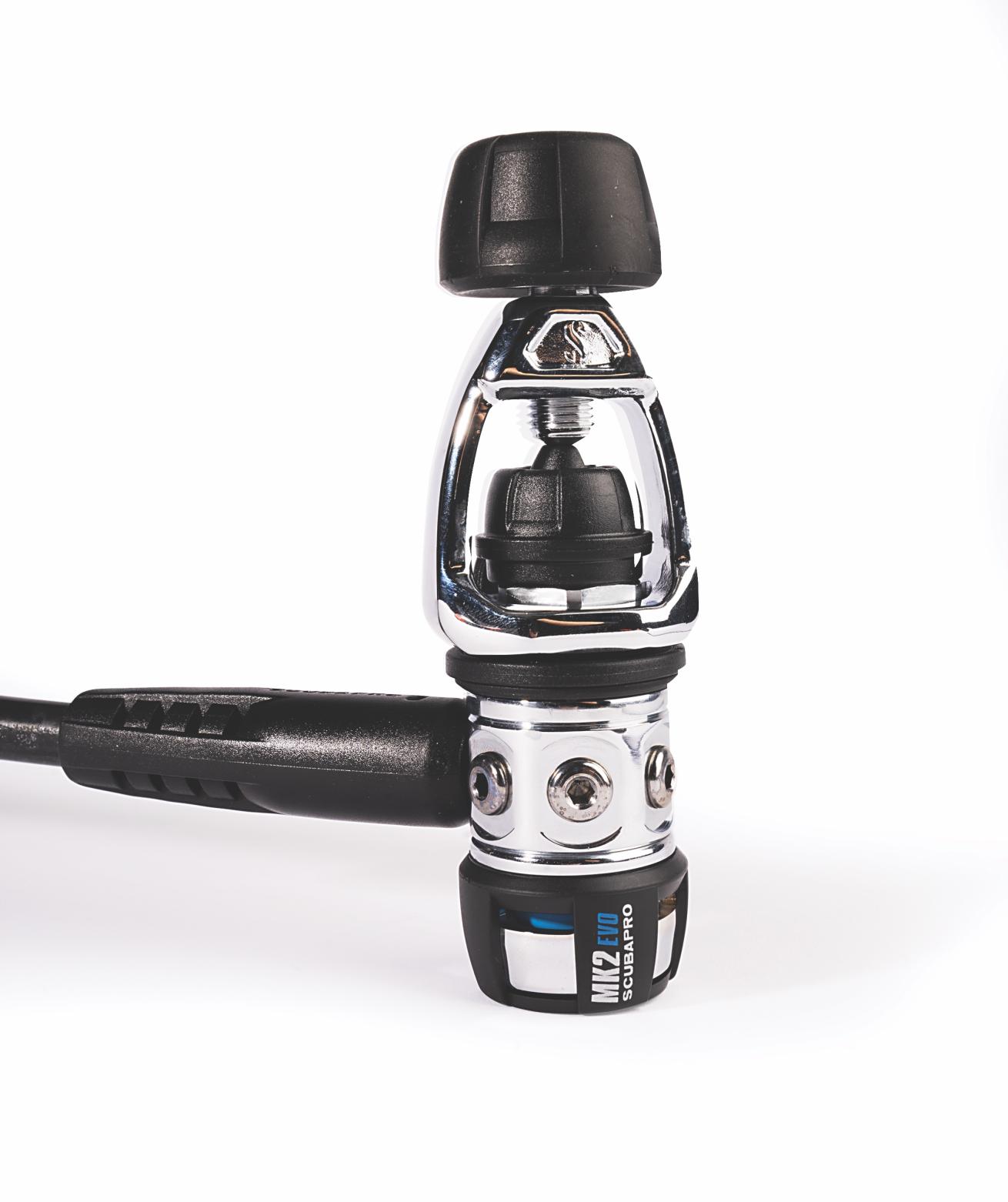
Monica MedinaScubapro R105 second stage
On the breathing simulator, this reg earned consistently excellent scores across most of our test rates and depths. Only when pushed to 75 RMV at 165 fsw and beyond did breathing effort begin to increase. Testers described the reg as “a nice breather,” scoring it very good for ease of breathing in swim and head-down positions, and dryness in all positions. It scored good for ease of breathing face-up. The larger second stage—at least when compared to some of the other more compact regs here—scored good for comfort and bubble interference. The reg scored good for resistance to free-fl ow. The small Venturi provides slightly more surface area to grip than the PX100. It can minimize the severity of a free-flow, but doesn’t usually stop it by itself. The purge is textbook, offering easy access and solid control. The reg earned very good scores for purge stiffness and ease of clearing. The MK2 EVO/R105 balances simplicity of operation with easy, smooth air delivery, making it a great choice for use as a rental, beginner reg or backup breathing system.
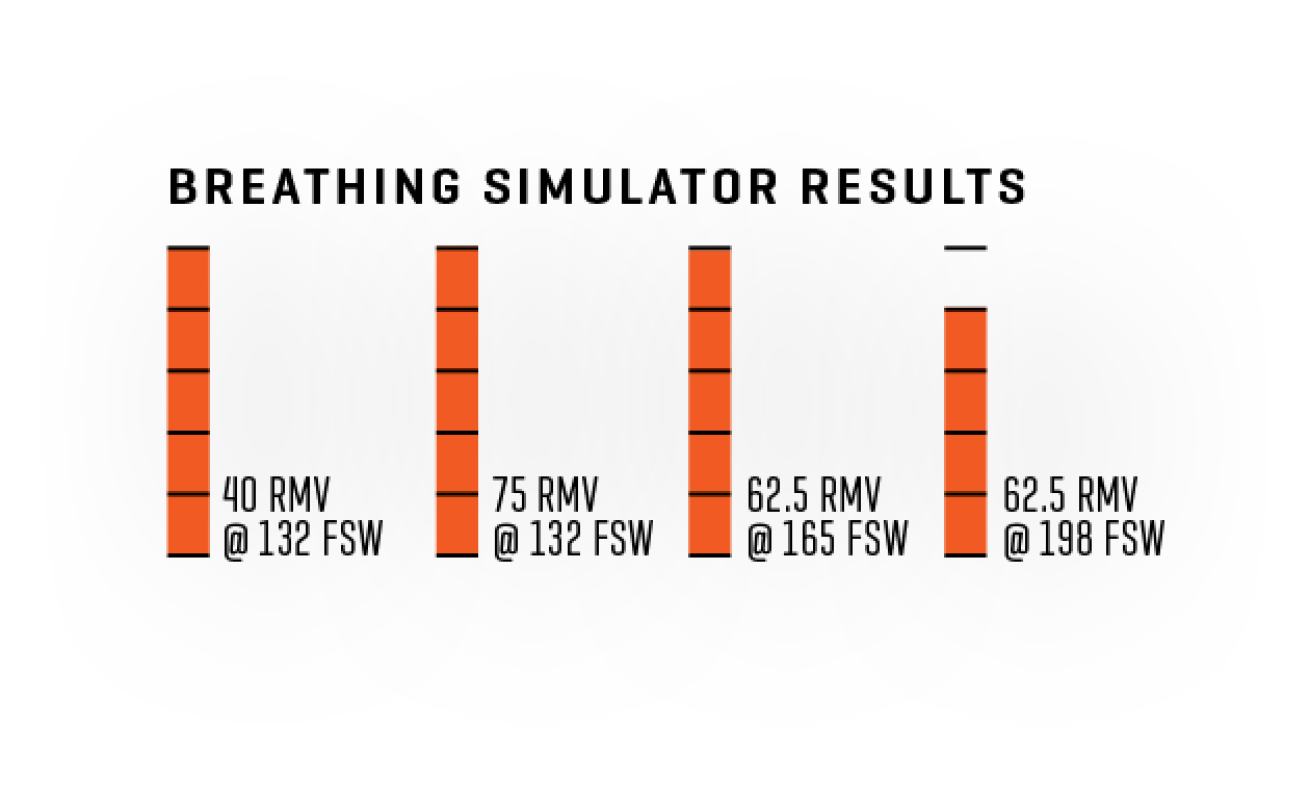
Scuba Diving StaffScubapro MK2 EVO / R105 Breathing Simulator Results
SHERWOOD
Maximus Pro
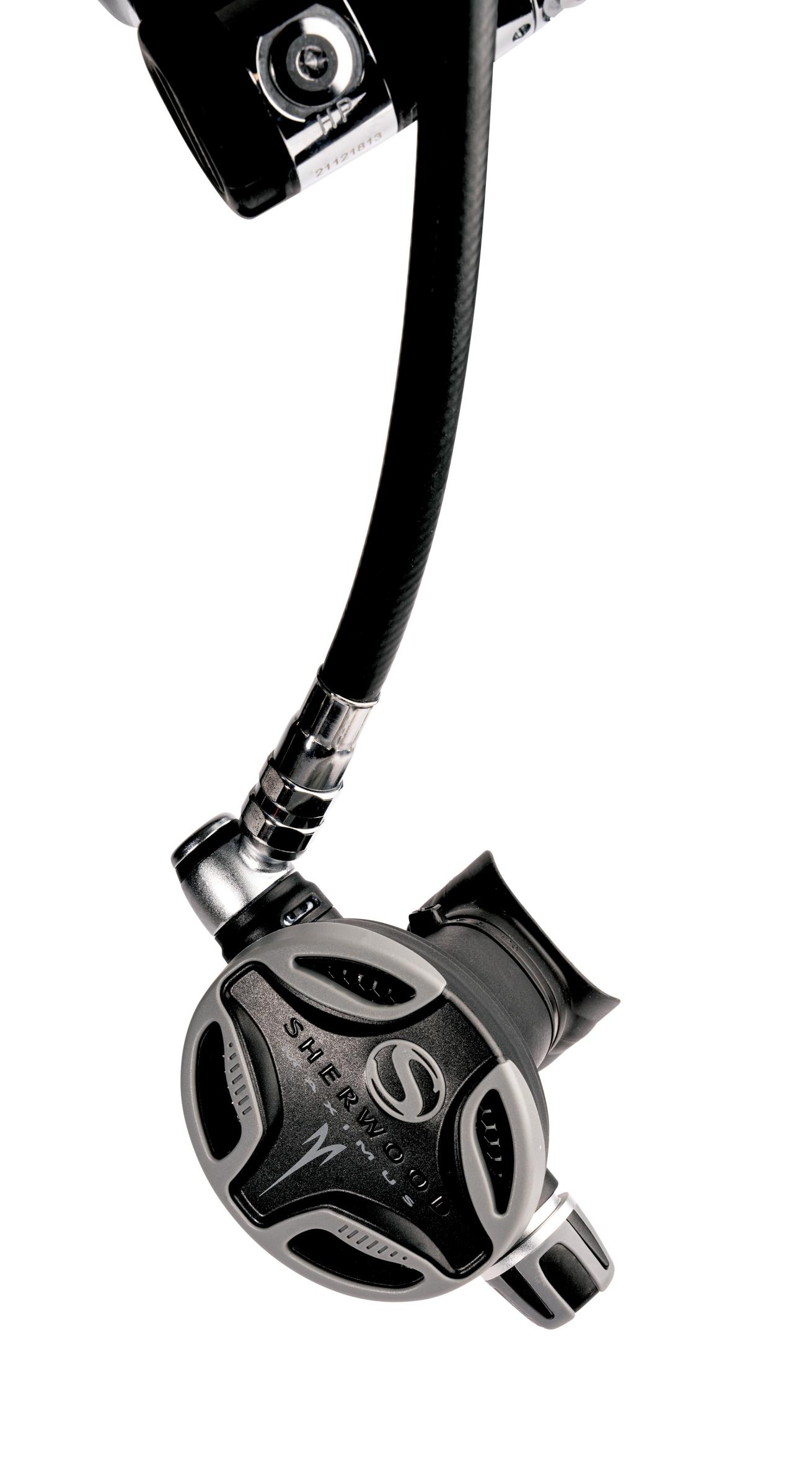
Monica MedinaMSRP $850
Contact sherwoodscuba.com
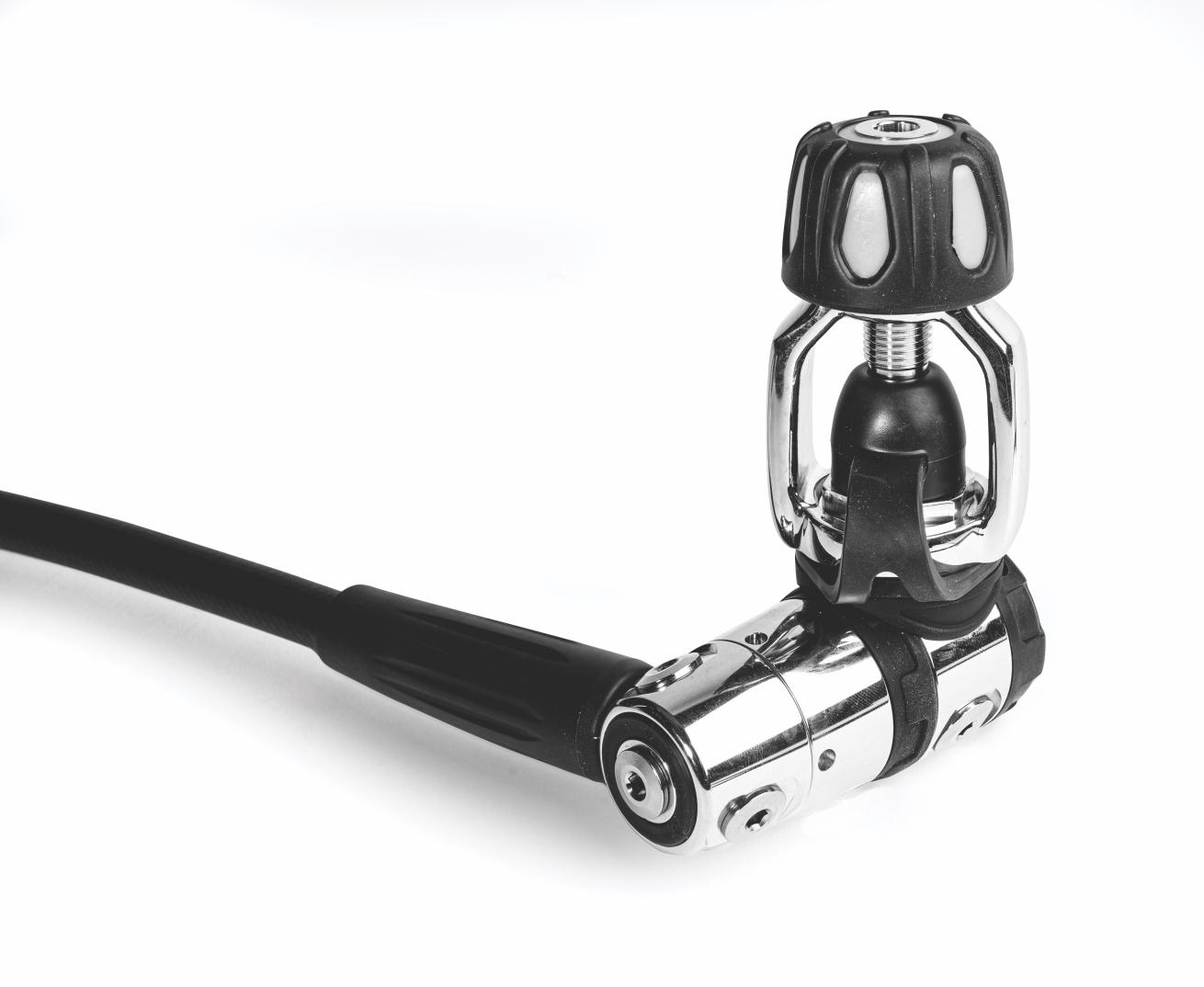
Monica MedinaSherwood Maximus Pro first stage
This reg is outfitted with an underarm swivel on the second stage so that the hose can be routed under the arm as opposed to over the shoulder. This helps to streamline the reg, especially in tight quarters. Testers scored the large oval second stage very good for comfort and bubble interference. The reg is very easy to clear. The wide purge is easy to access and offers good control. The ergo adjustment knob combines inhalation and Venturi control into a single operation. It has a slight but noticeable effect on breathing effort. Testers felt the reg was a bit prone to free-flow. Adjusting the Venturi helps to minimize the blast. On the simulator, the reg’s scores were very consistent between 132 and 165 fsw, with excellent scores at lower work rates and very good scores at 40 and 62.5 RMV. The reg scored excellent for ease of breathing in swim position and noise. Testers felt the reg was a bit wet outside of swim position, but otherwise had nothing but praise for its low-effort, super-smooth gas delivery. “A real pleasure to breathe” was how one tester described it.
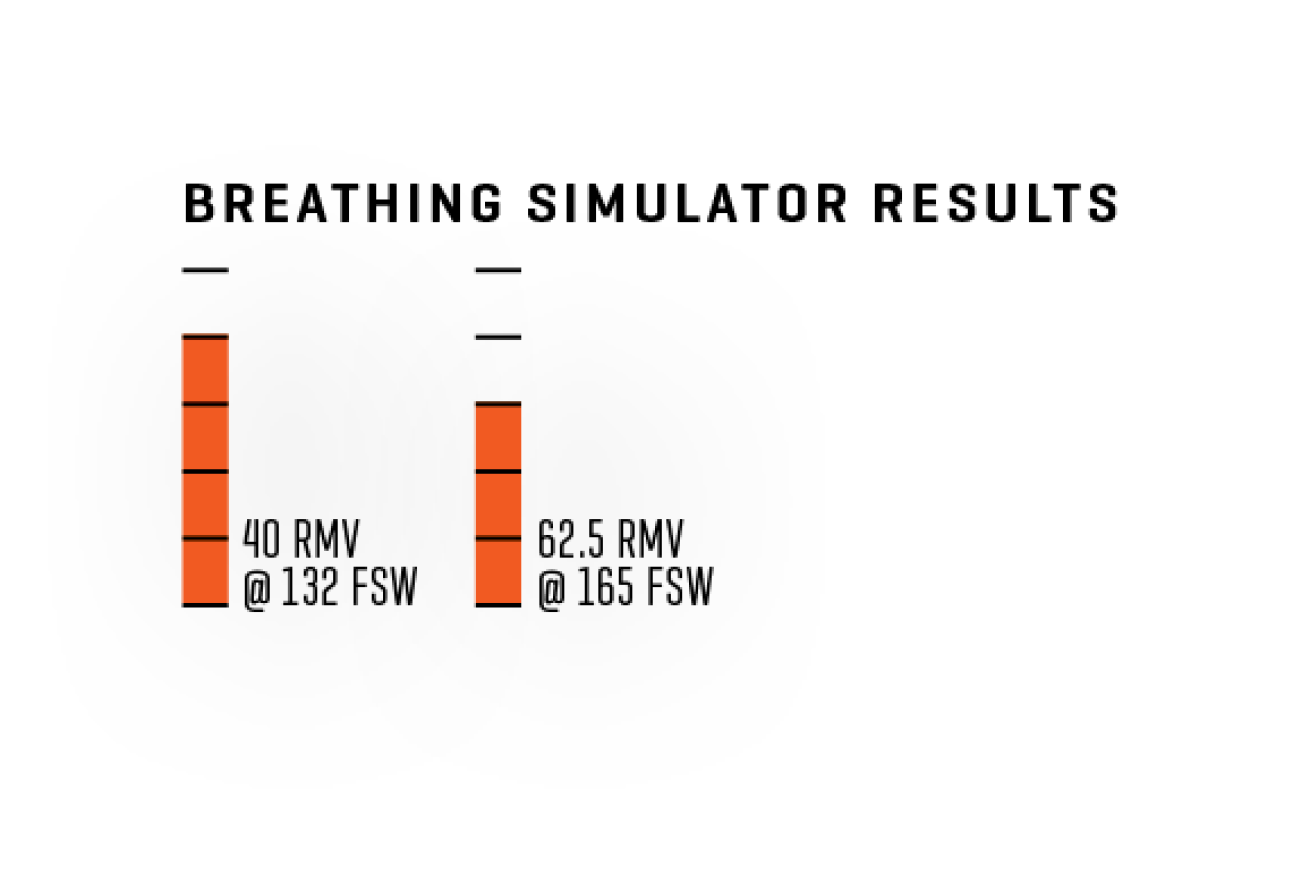
Scuba Diving StaffSherwood Maximus Pro Breathing Simulator Results
TUSA
RS609
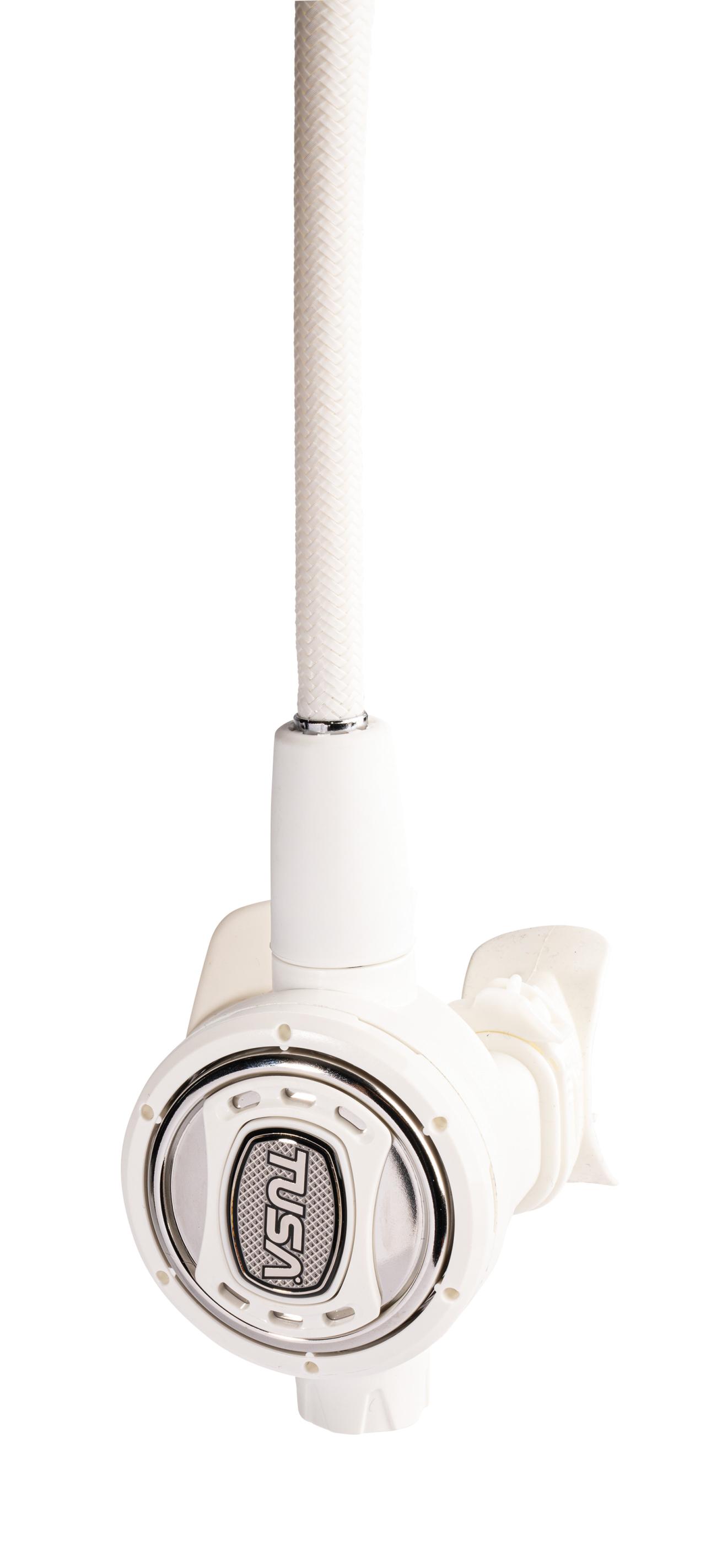
Monica MedinaMSRP $499
Contact tusa.com
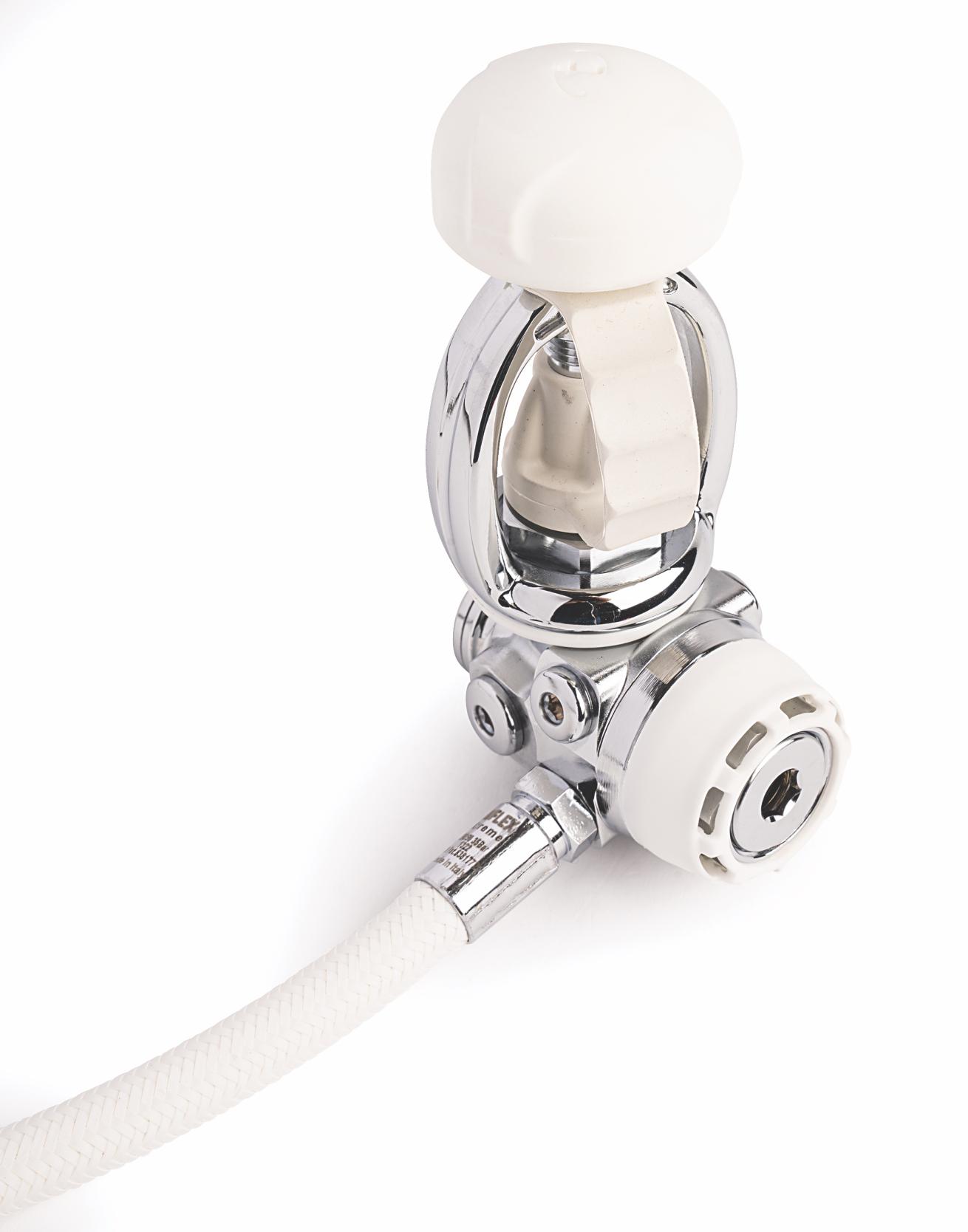
Monica MedinaTusa RS609 first stage
Testers scored this reg’s lightweight second stage very good for comfort. The first stage is equally small and compact and still manages to include two high-pressure ports. The reg earned excellent and very good scores on the simulator at low to moderate breathing rates. Breathing effort was consistent with depth but steadily increased with work rate. In the water, testers described the reg as “smooth as silk” and a “great breather.” It breathes a little wet outside of swim position but earned very good scores for ease of breathing overall. The reg scored very good for purge stiffness and ease of clearing. “Purge easy to find and press, does what you expect,” one tester said. The breathing adjustment/Venturi knob is ergonomic and provides an audible click with each turn. The adjustment is limited to a moderate range, which allows for easy breathing without risking freeflow. It scored very good for breathing adjustment and resistance to free-flow. This quiet, comfy reg offers user-friendly ergonomics and smooth, easy breathing. And yes, it does comes in black.
Related Reading: 5 Diving Tips for Saving Air
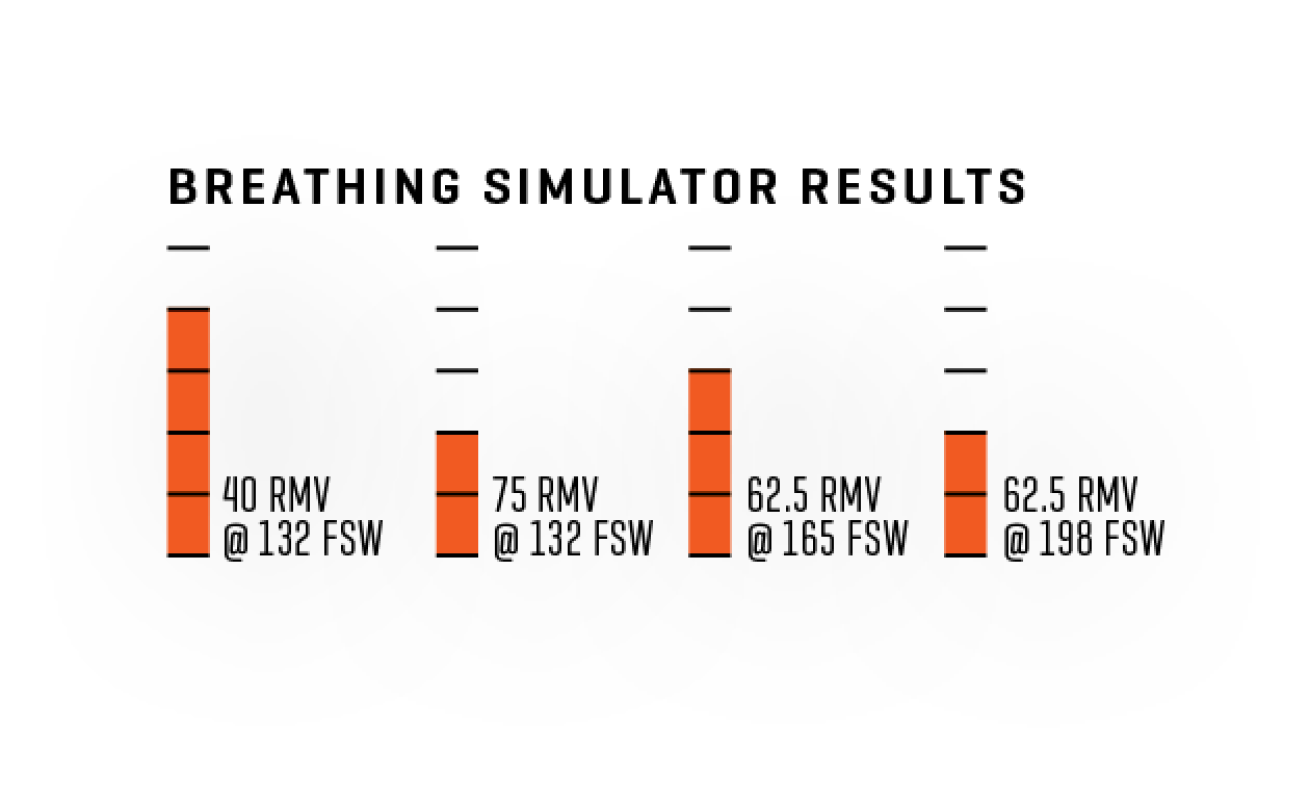
Scuba Diving StaffTusa RS609 Breathing Simulator Results
ATOMIC
TFX
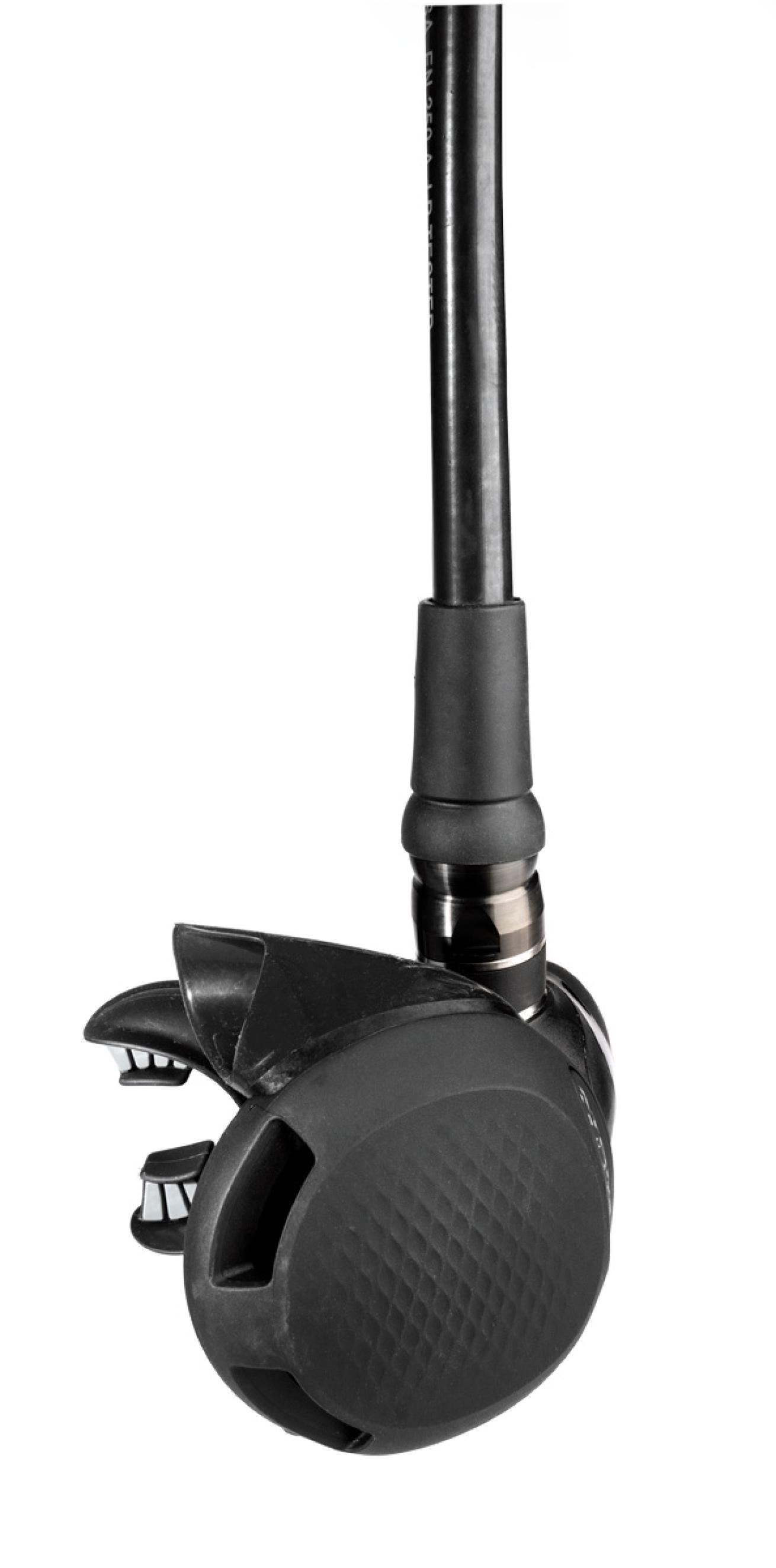
Monica MedinaCONTACT atomicaquatics.com
CHECKOUT DIVE
While not fully tested, we did have a chance to try this reg in the field.
This reg has a peculiar look, with its purge situated below the main body and set at an angle. That’s because the TFX has altered the location of the inhalation diaphragm and exhaust valve, centering both at the front of the regulator. This is meant to reduce breathing effort. Testers felt it breathed very easily and smoothly, especially at lower work rates. “Feels very natural,” is how one diver described it. The exhaust valve is located at the center of the purge, where the exhaust tee directs exhalations out behind the diver. The purge is supple and responsive; however, the unfamiliar positioning may make it awkward to access at first. Testers found the reg very comfortable in the mouth and really liked its swiveling ball mount. The yoke version features a special thread on the first stage, which allows it to tighten much more quickly and with less effort than standard yoke screws.

